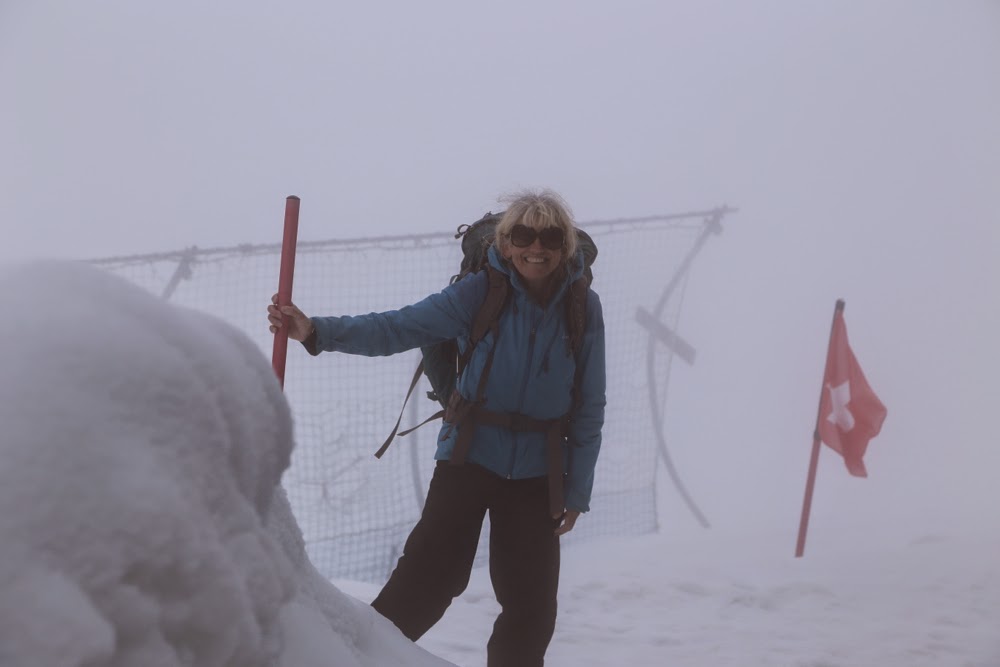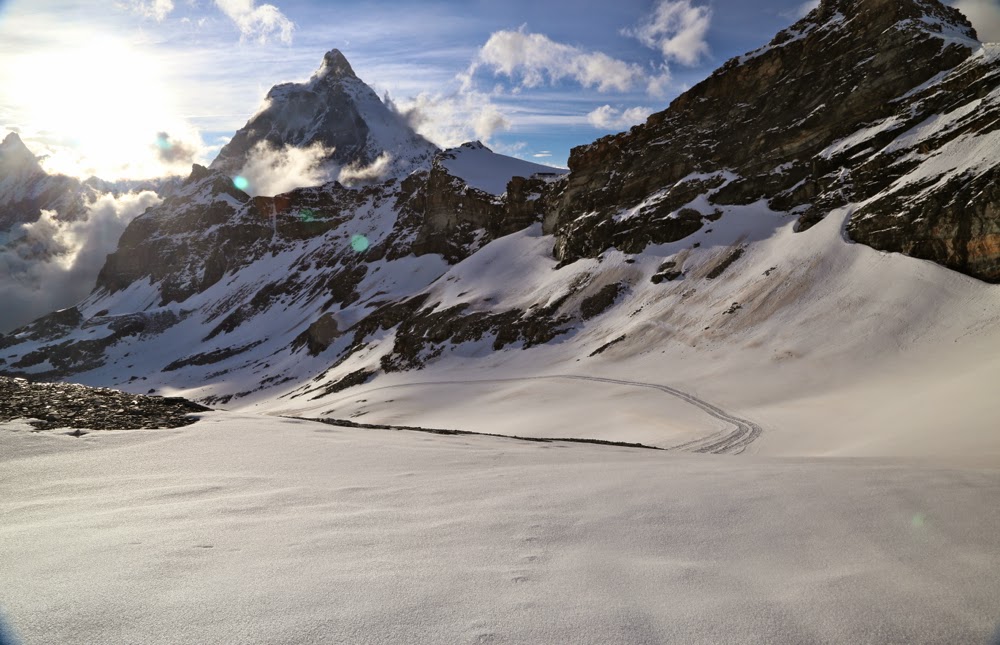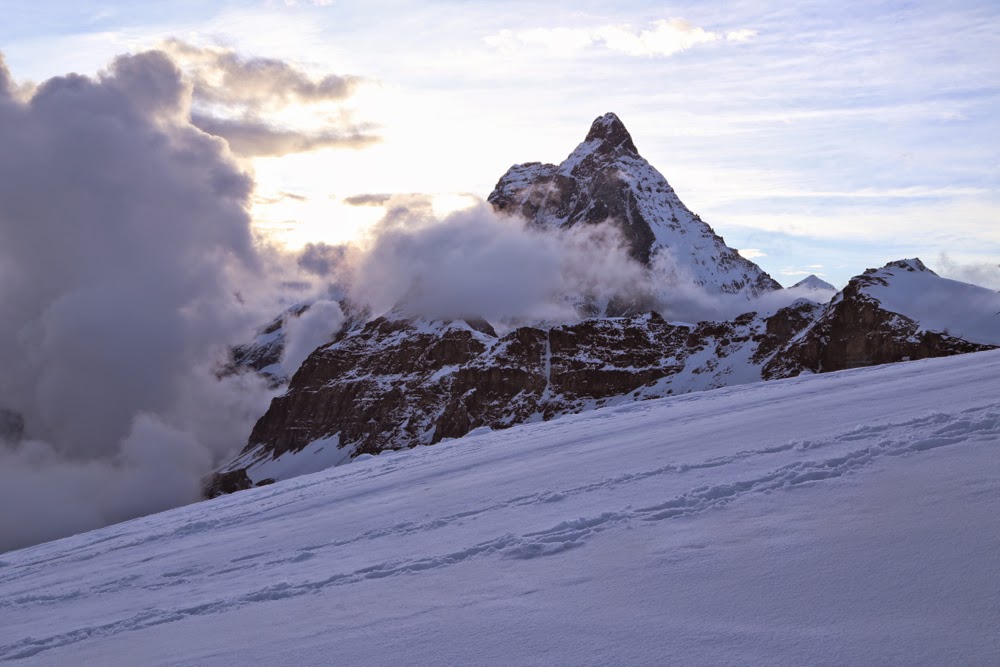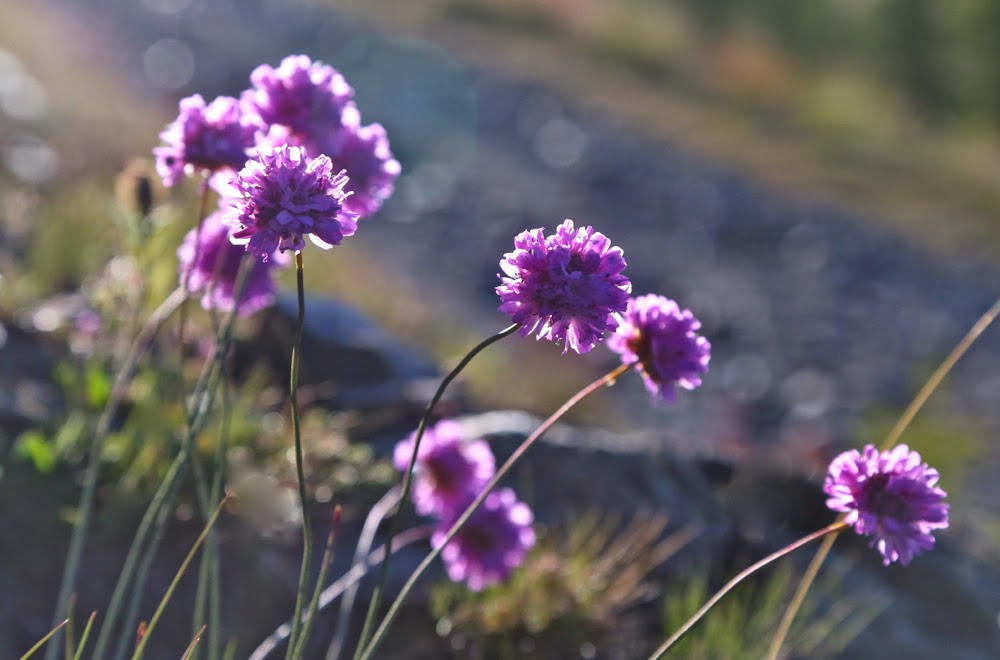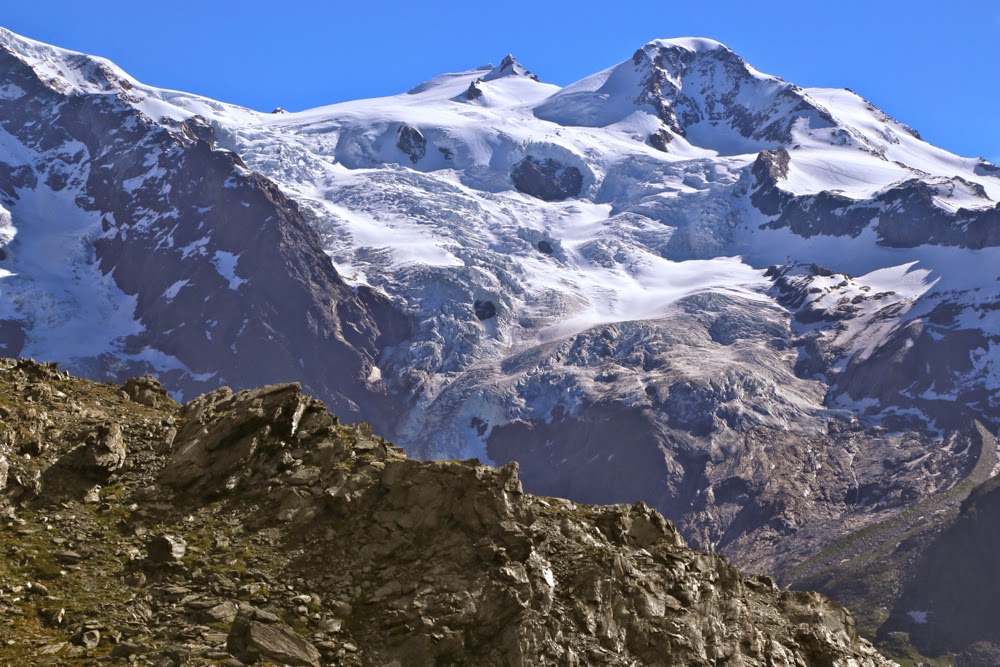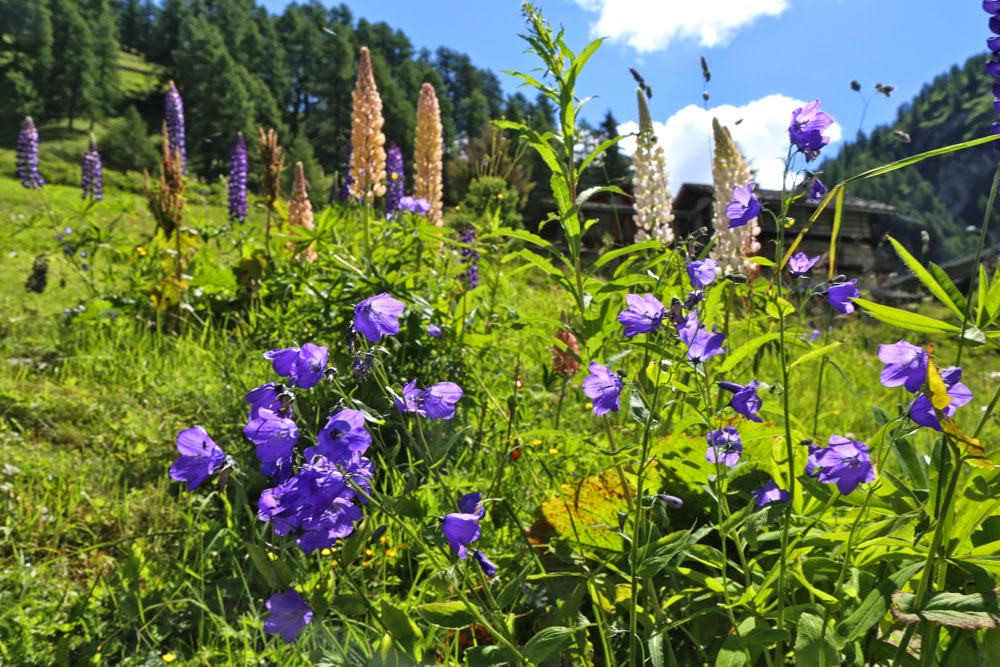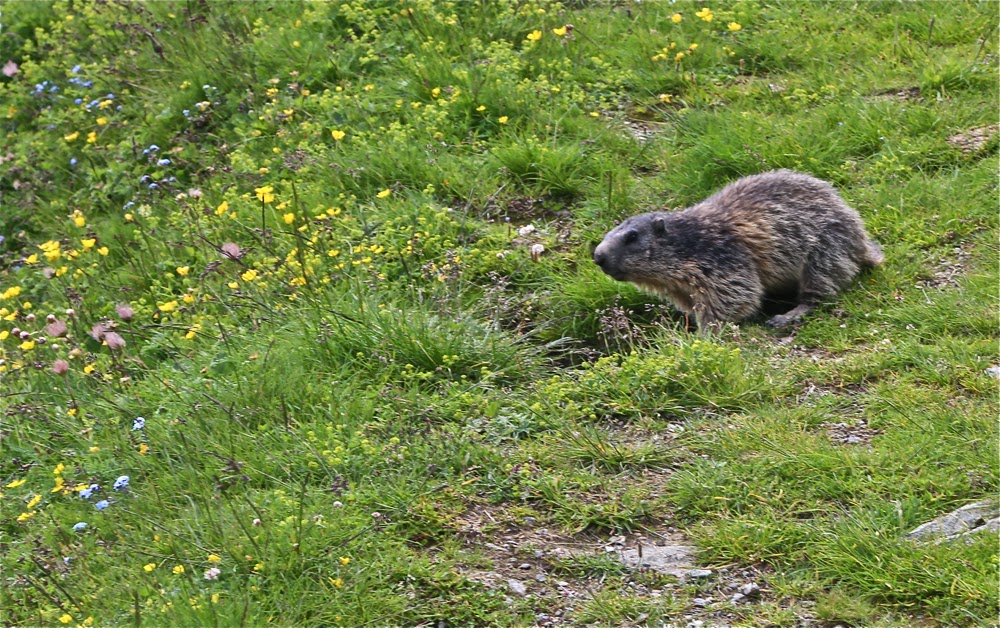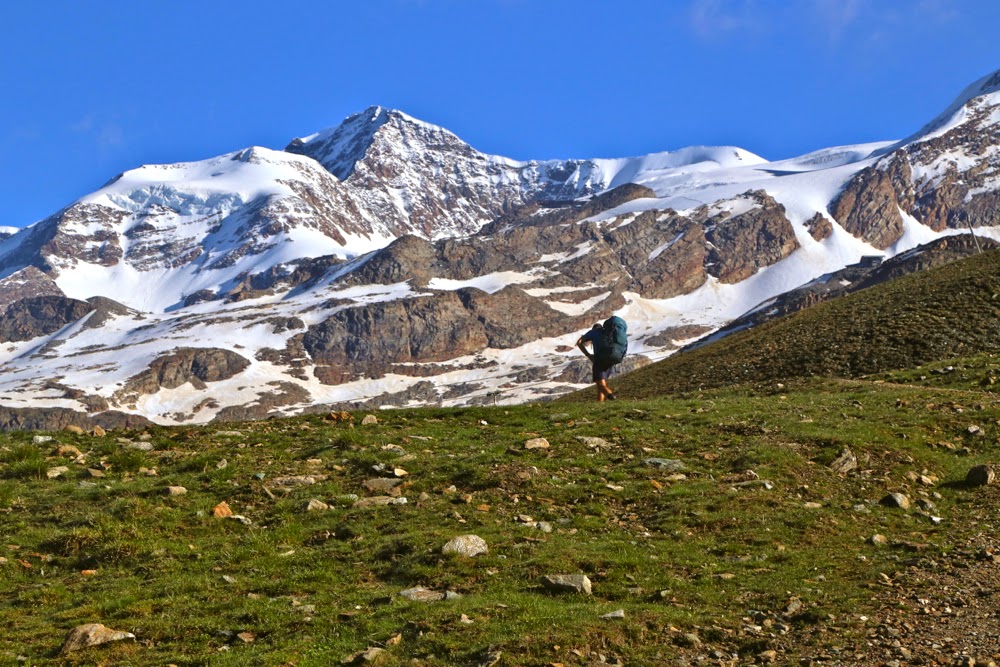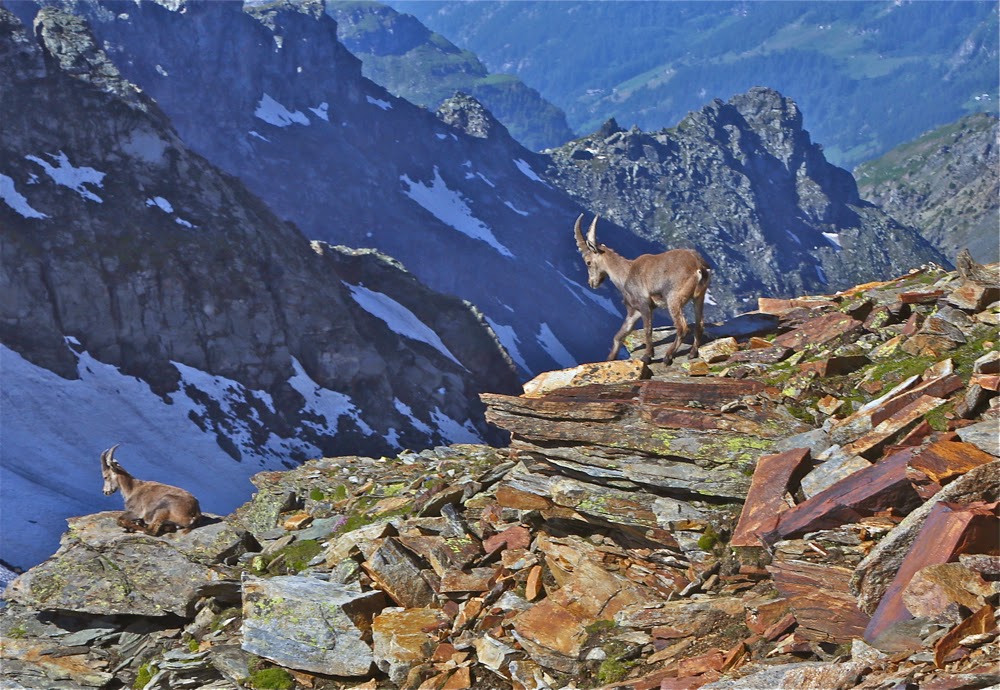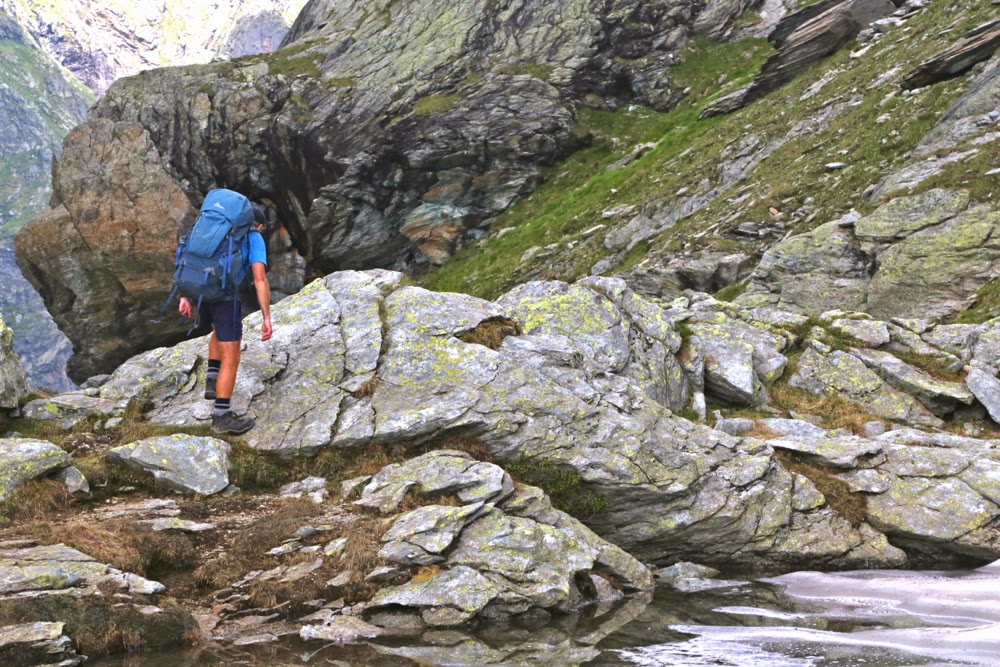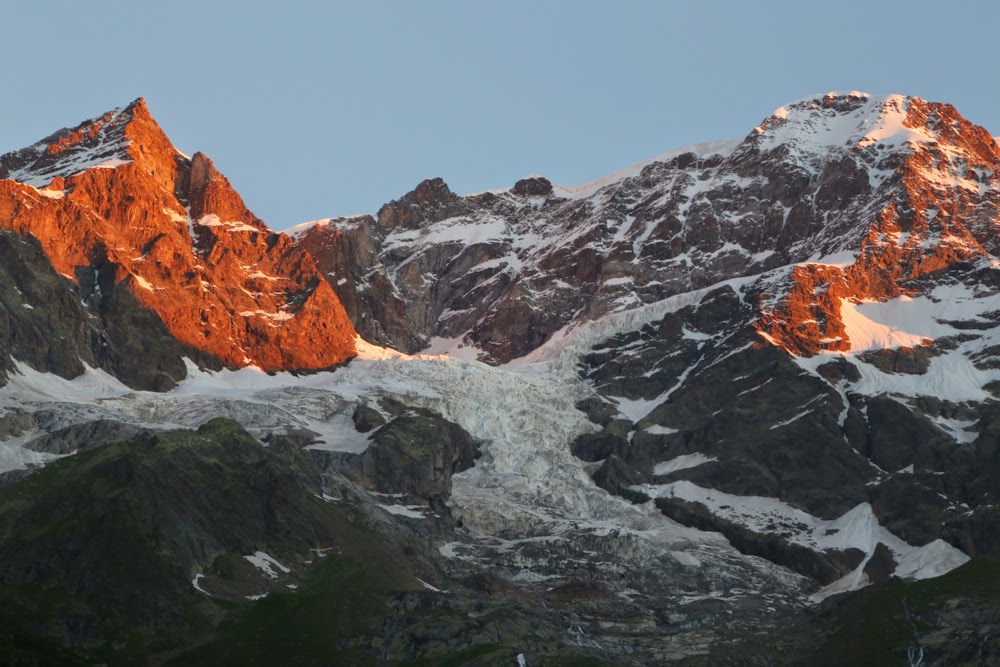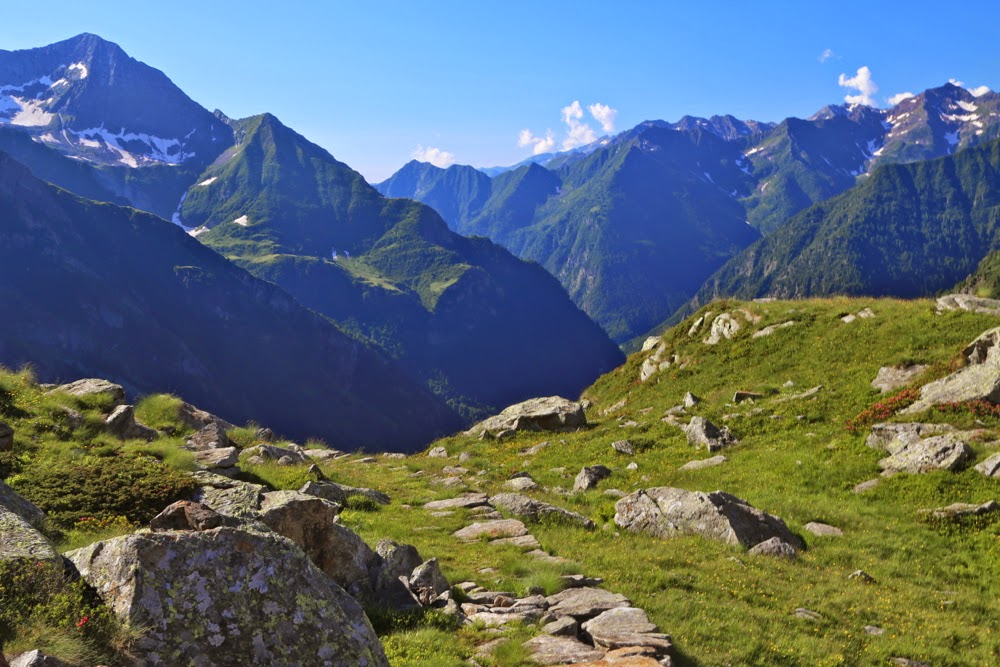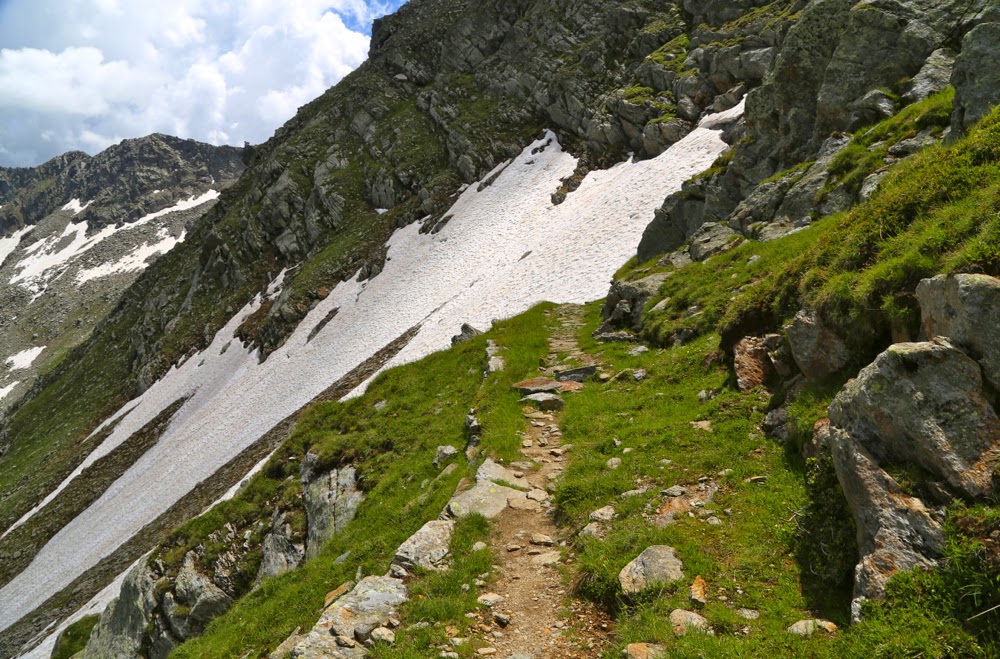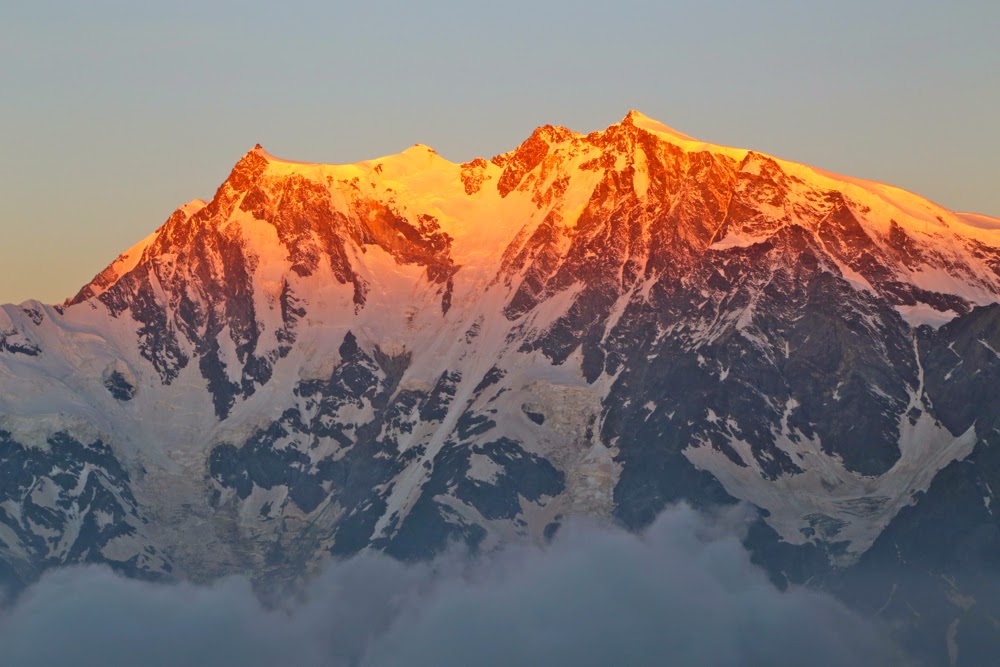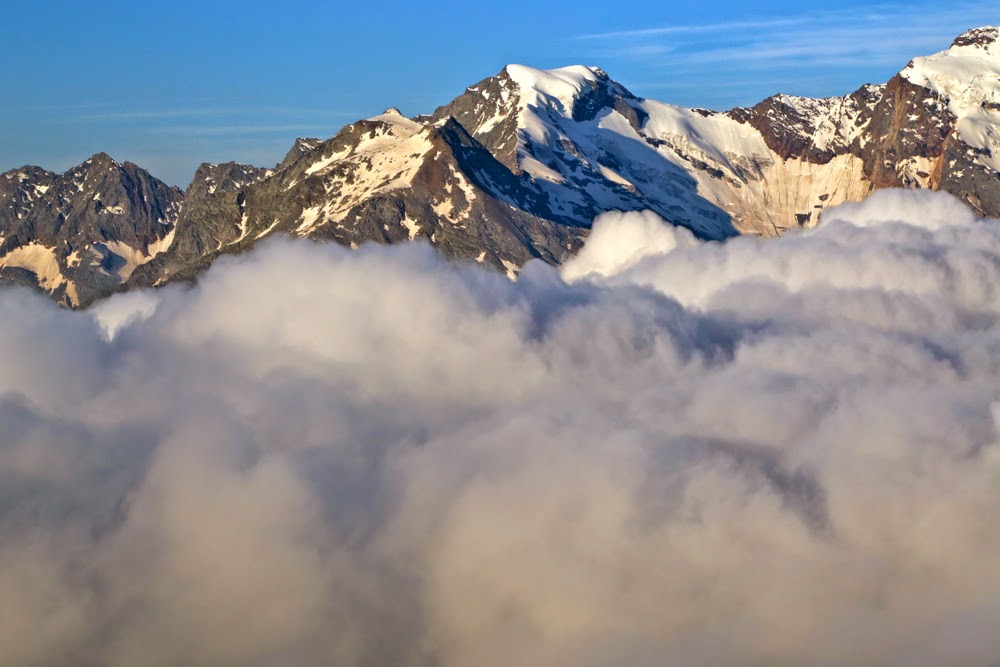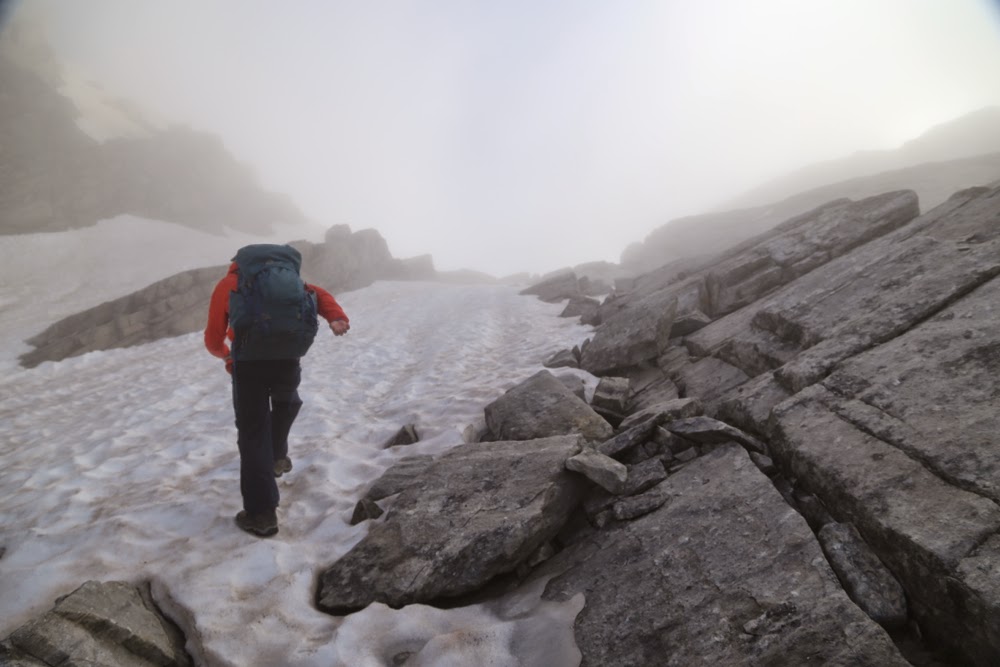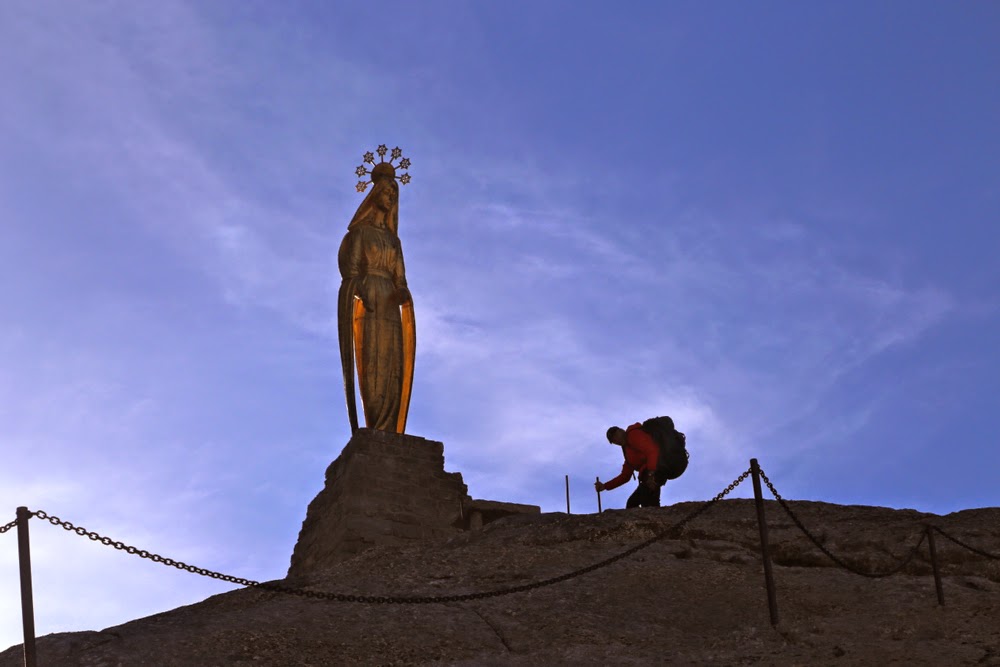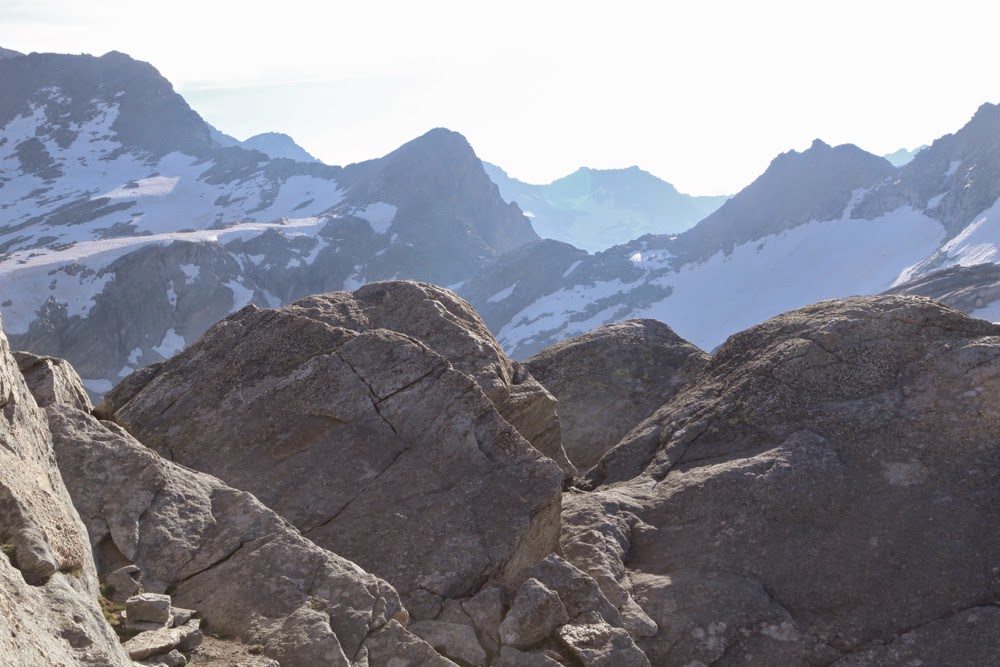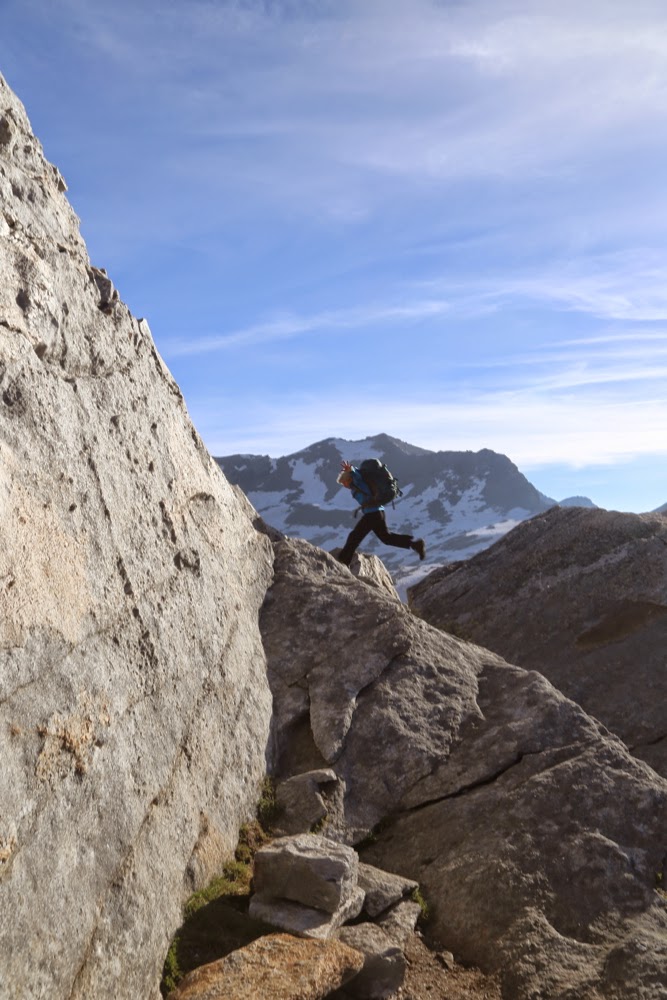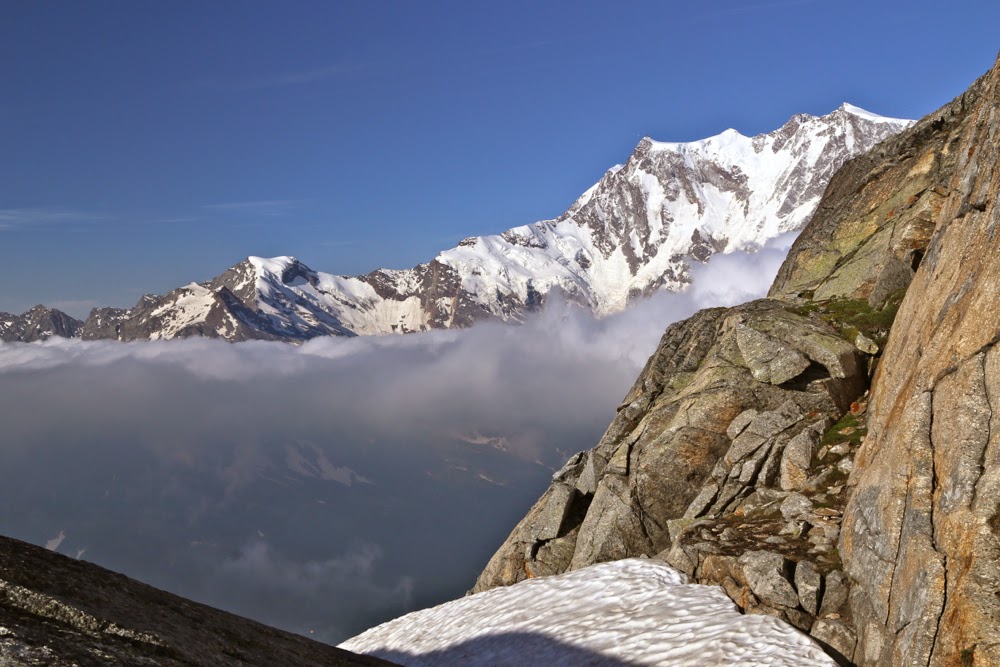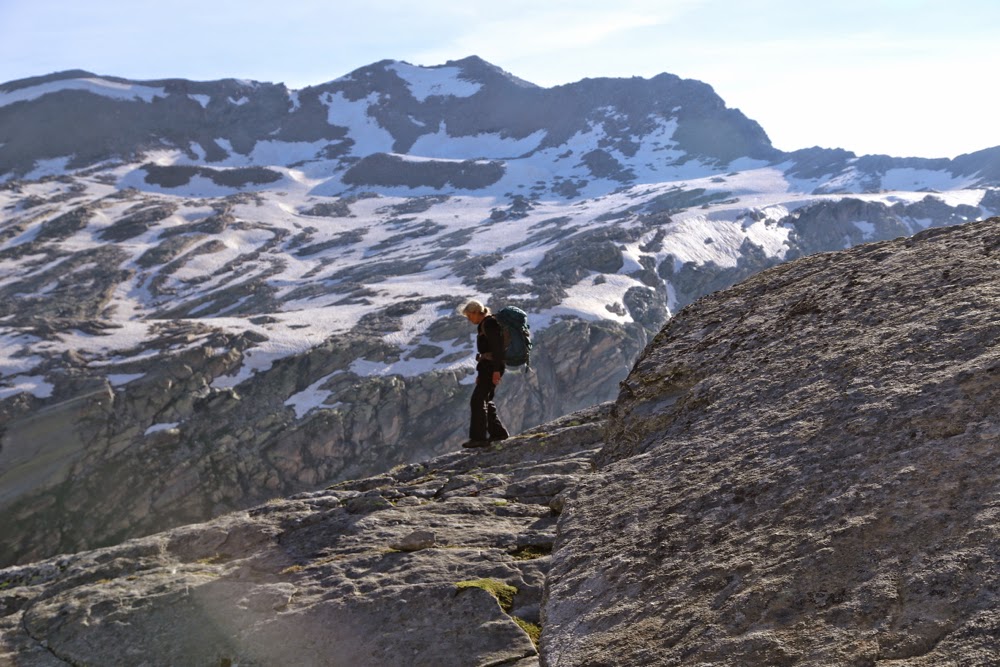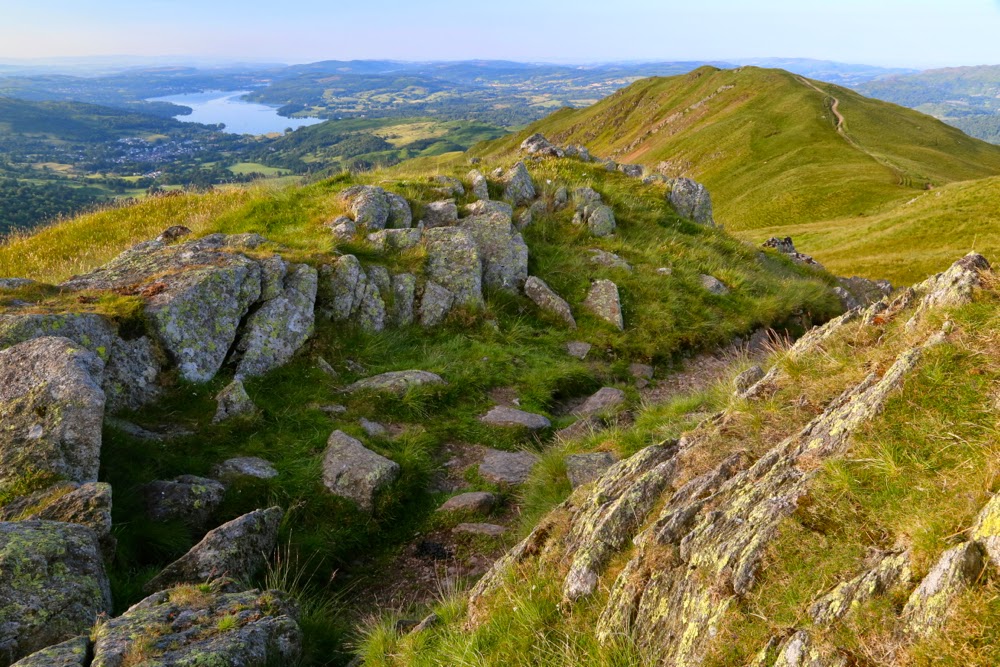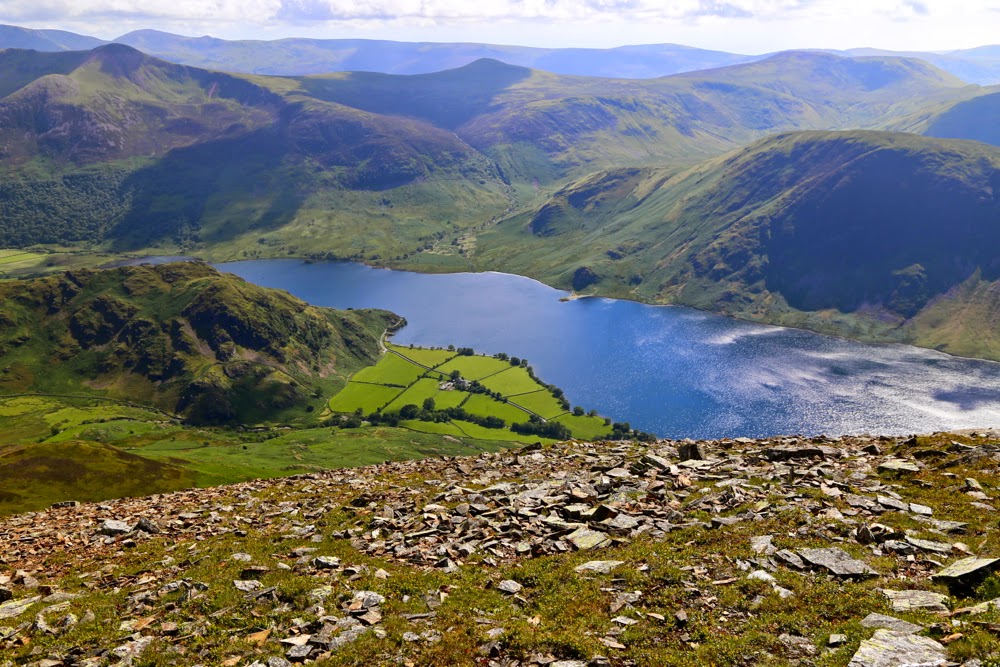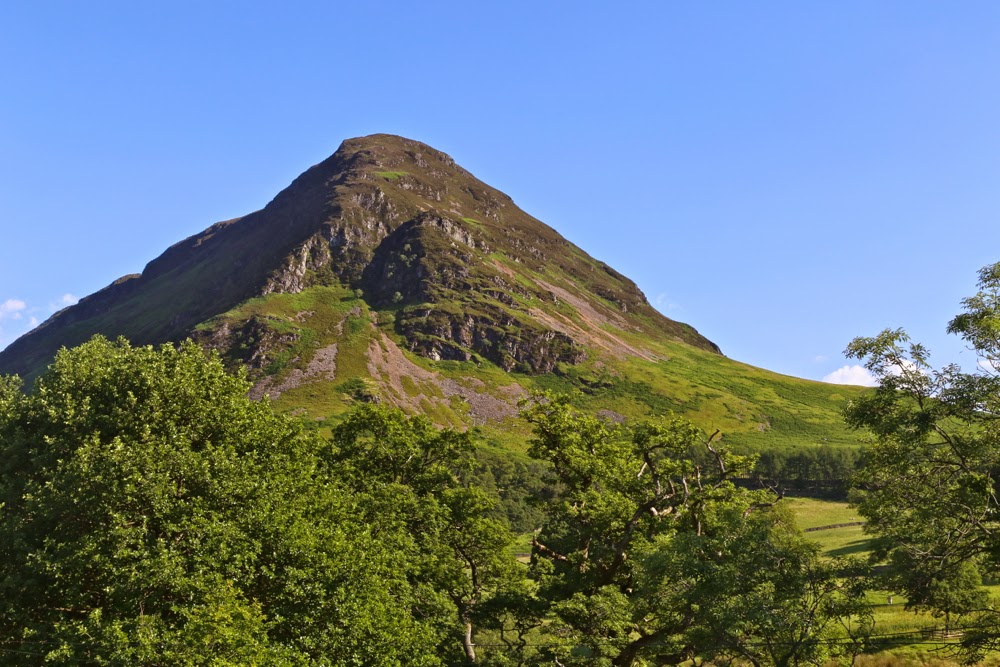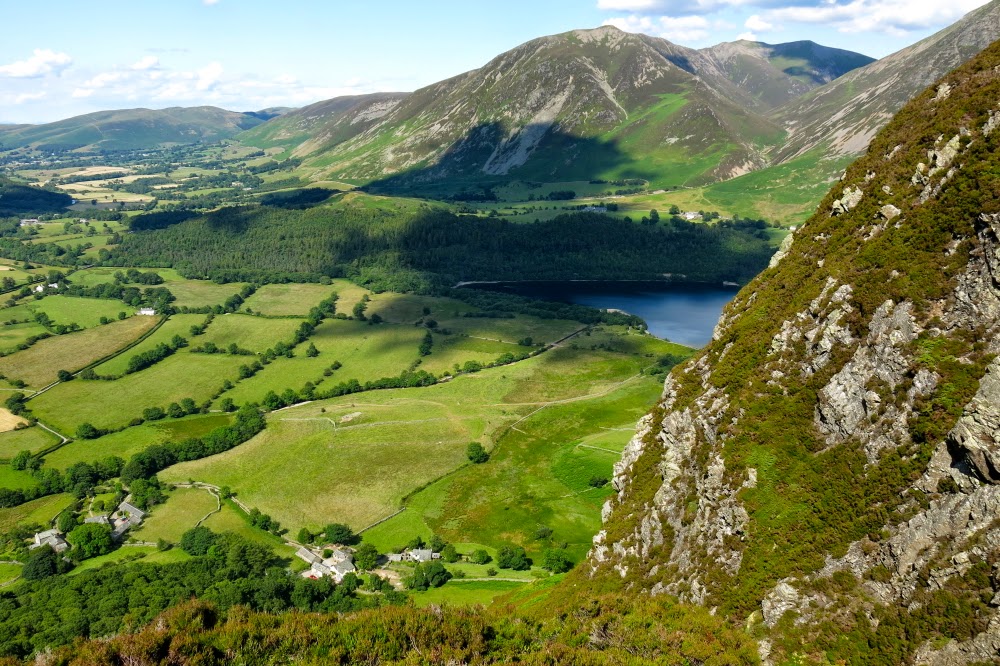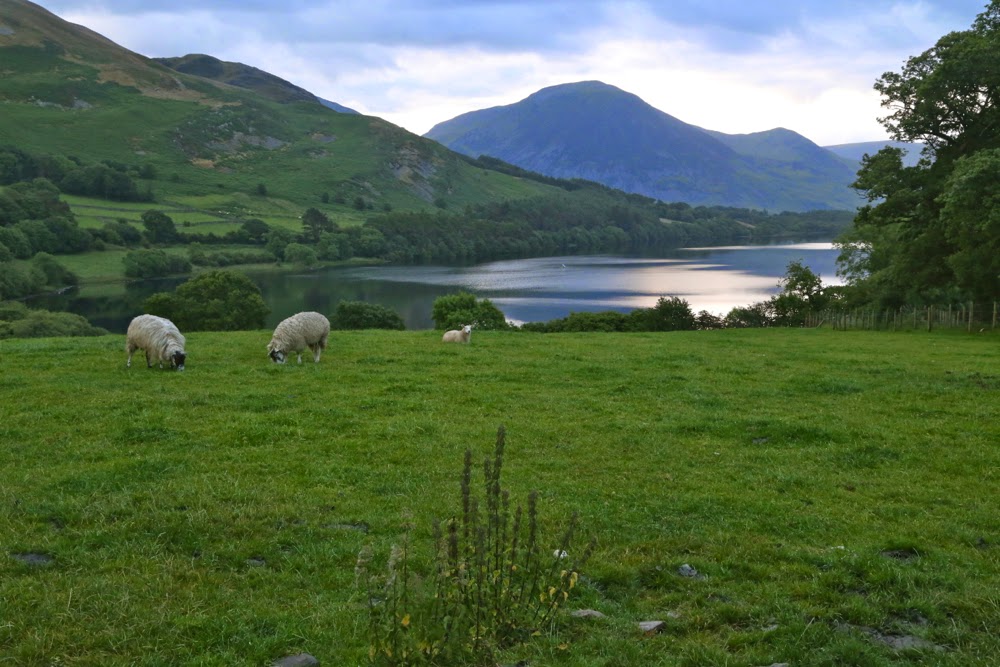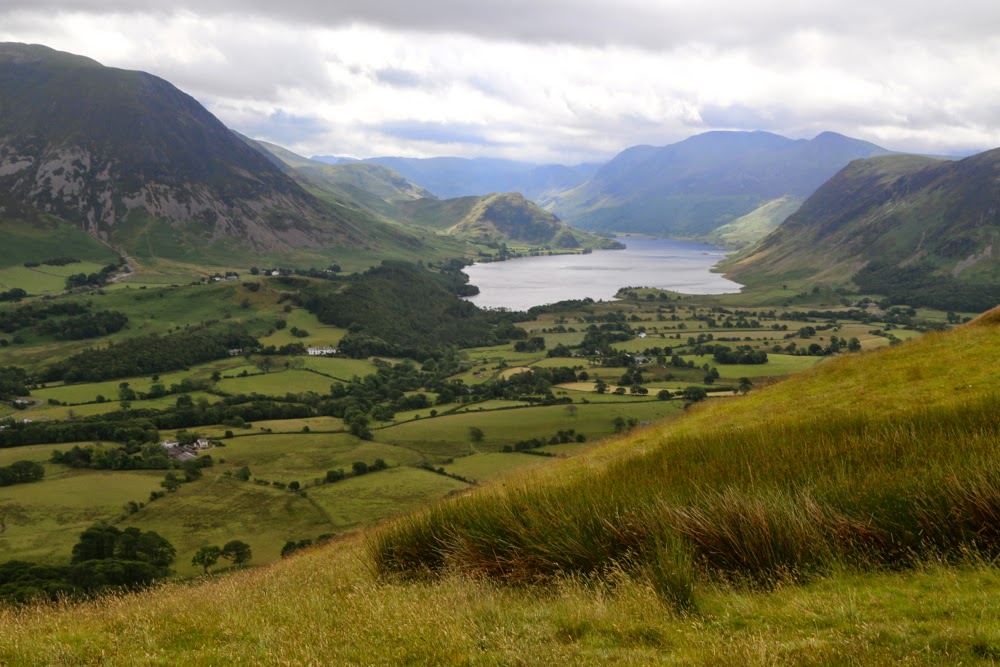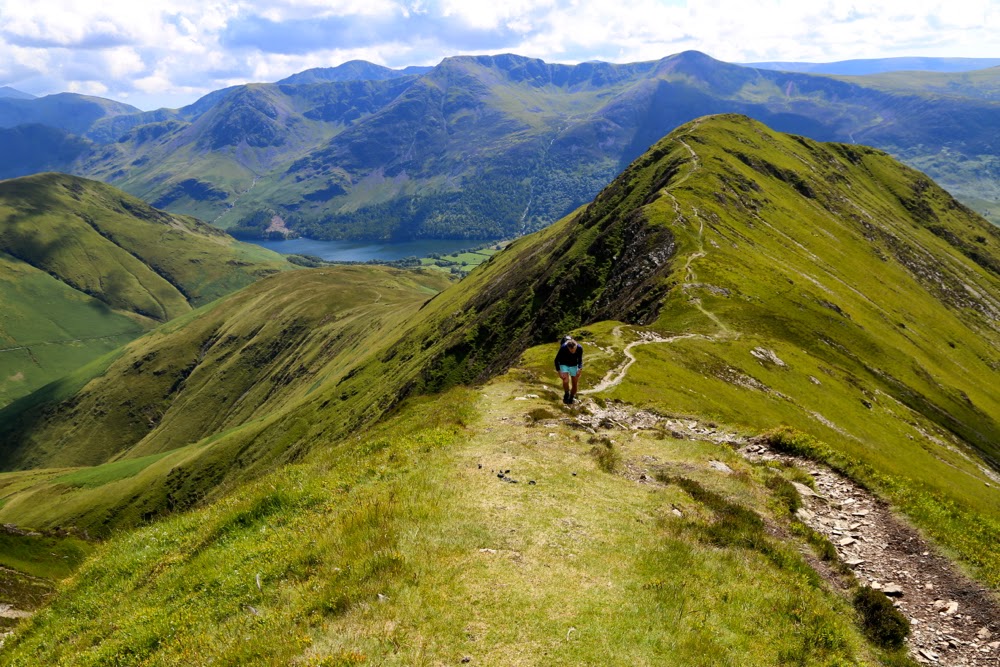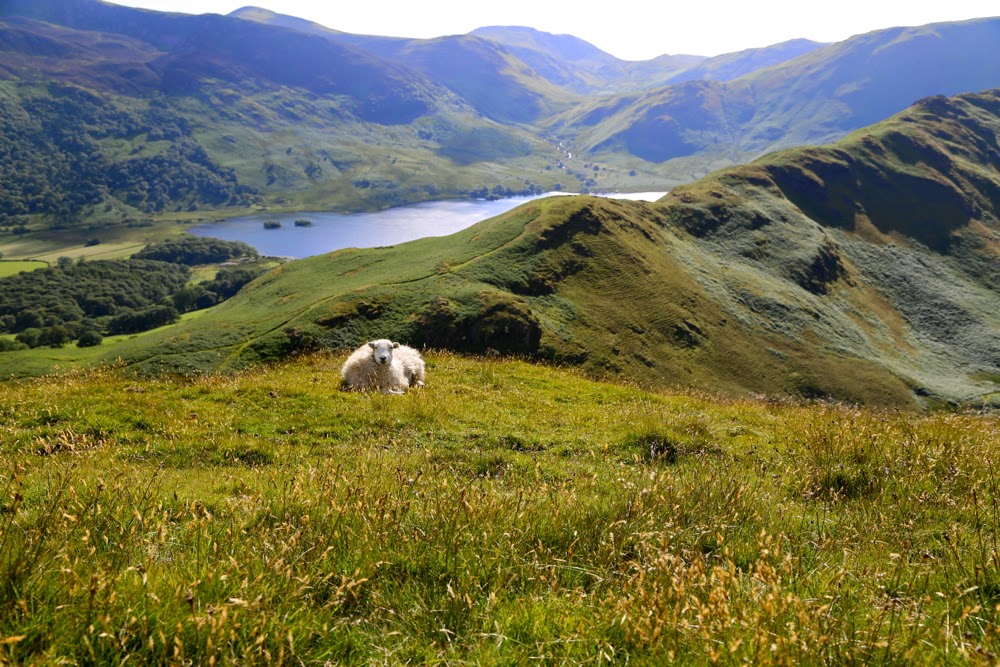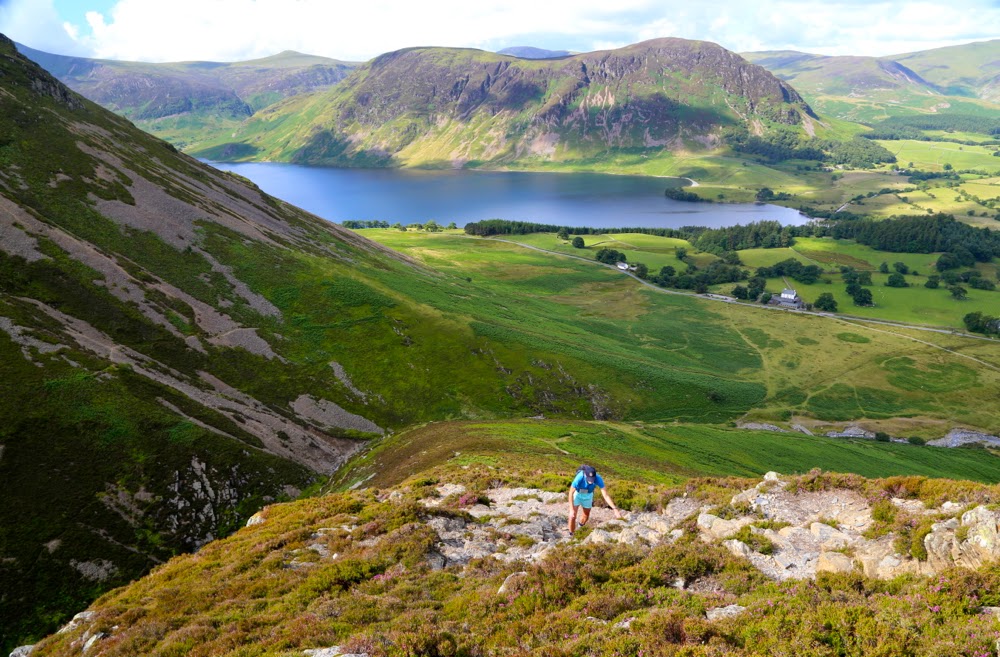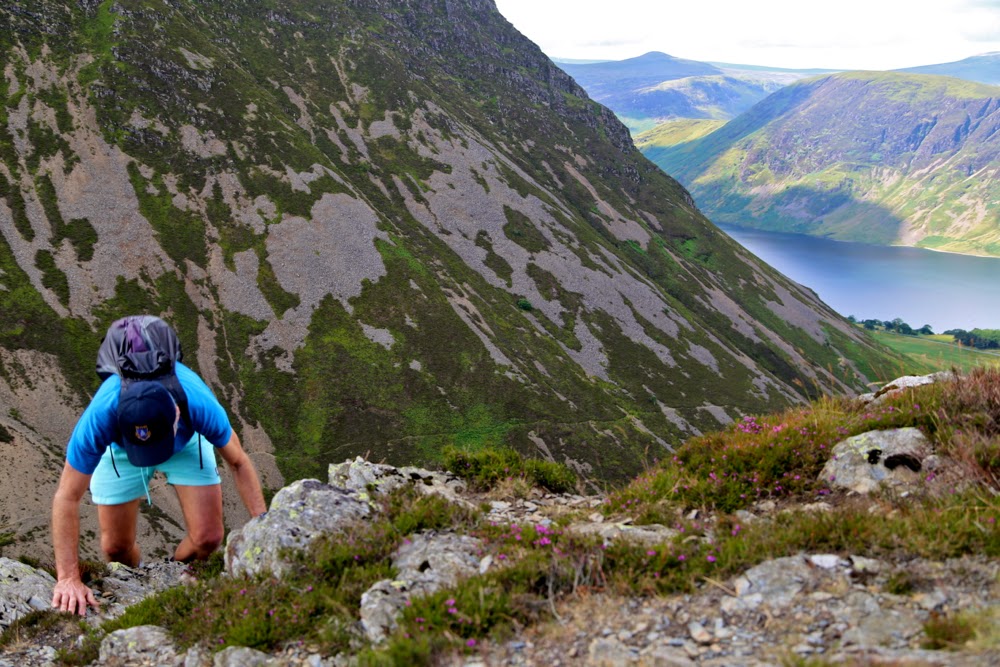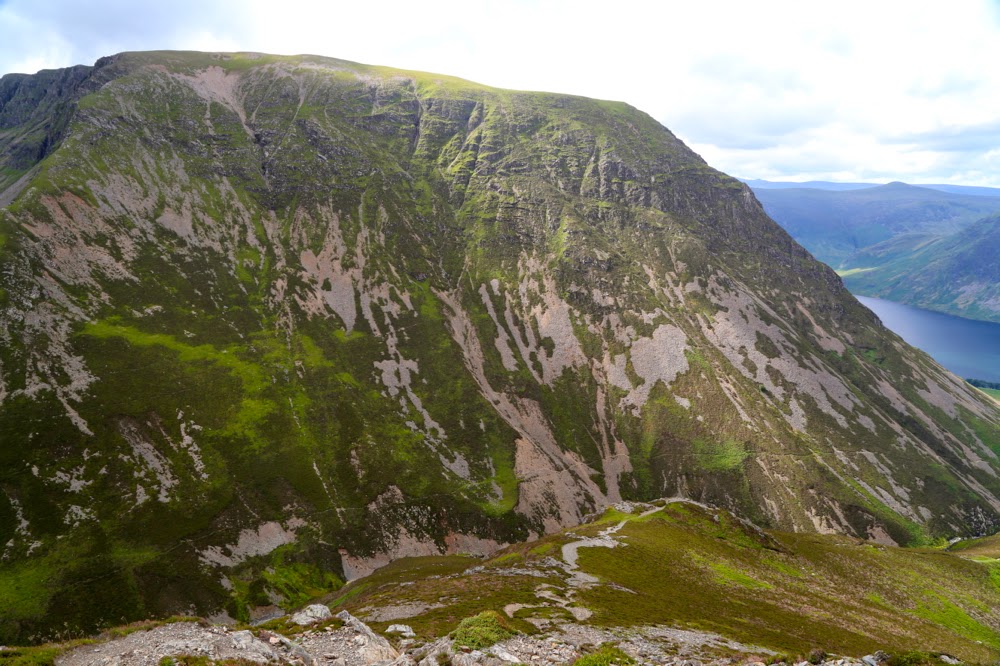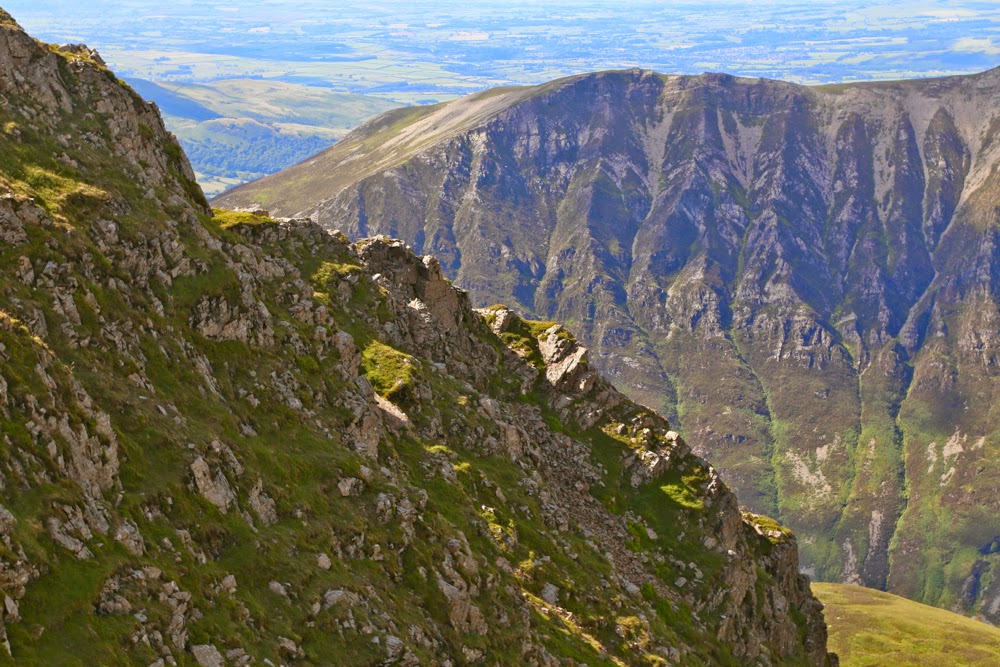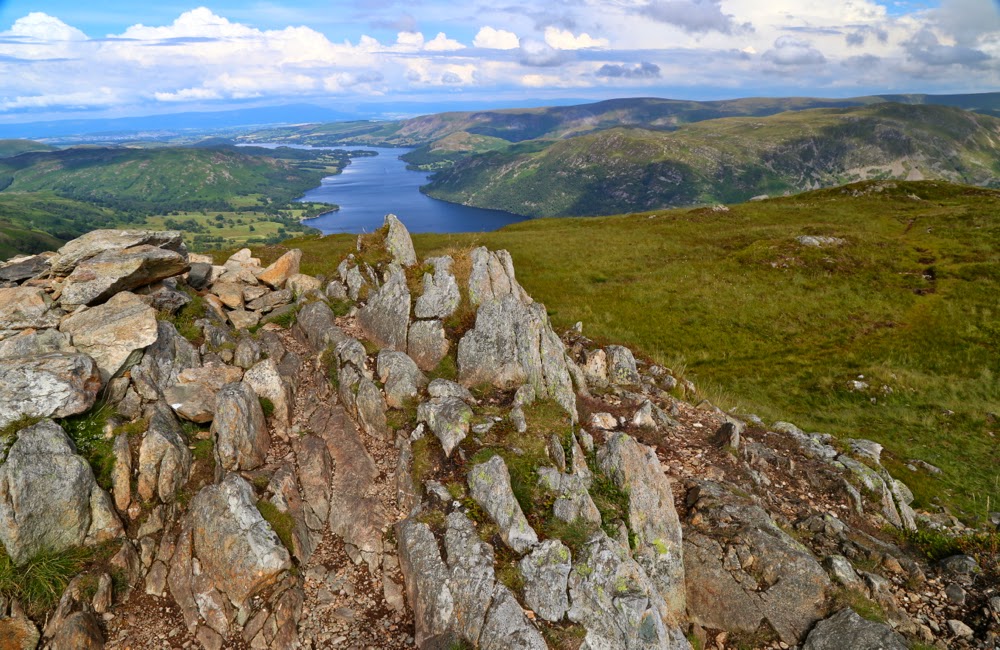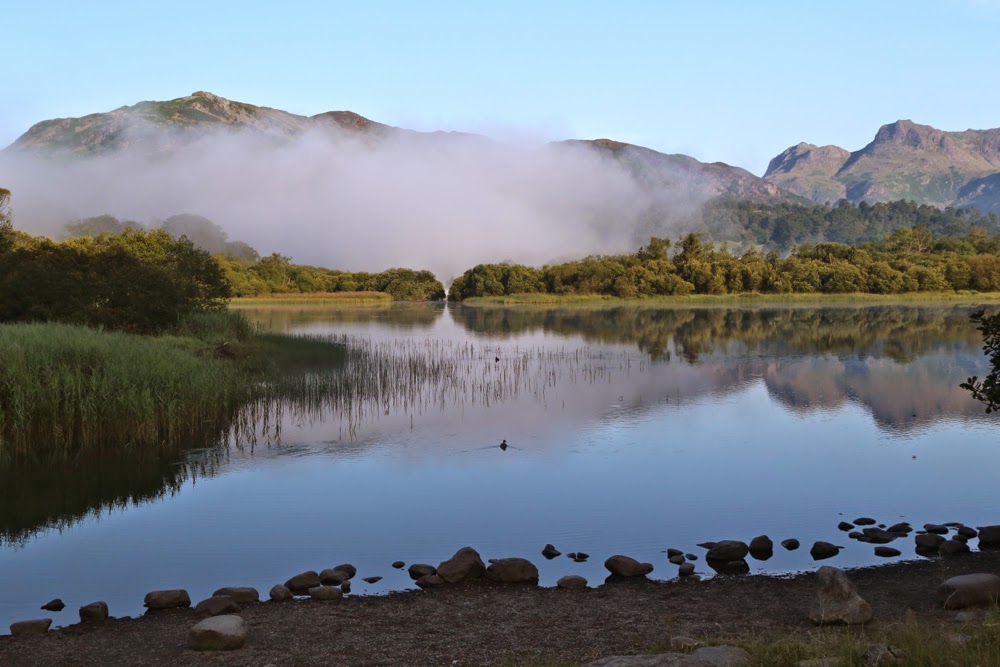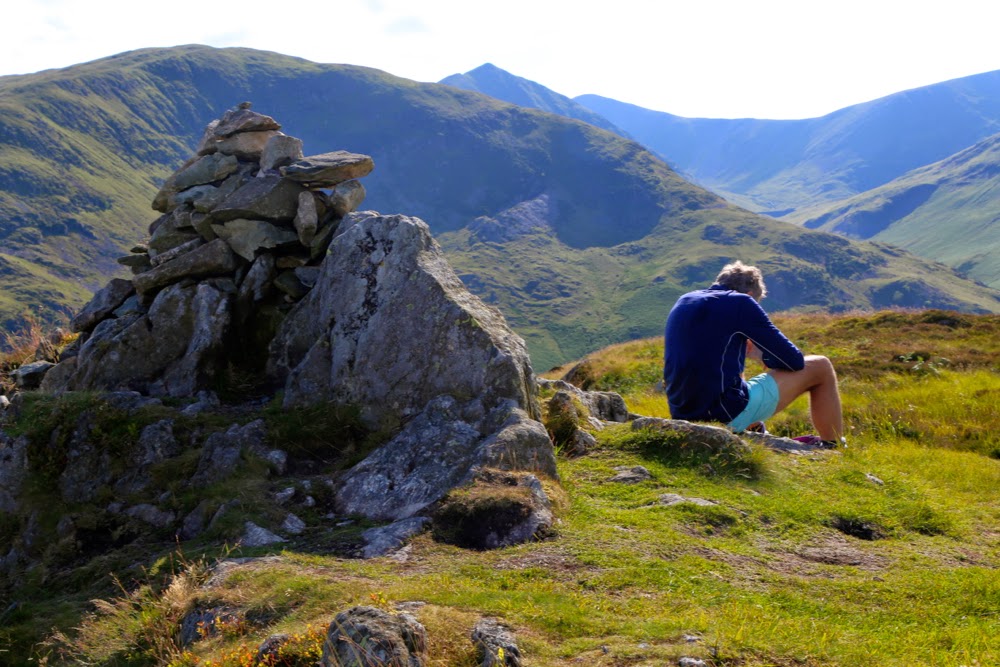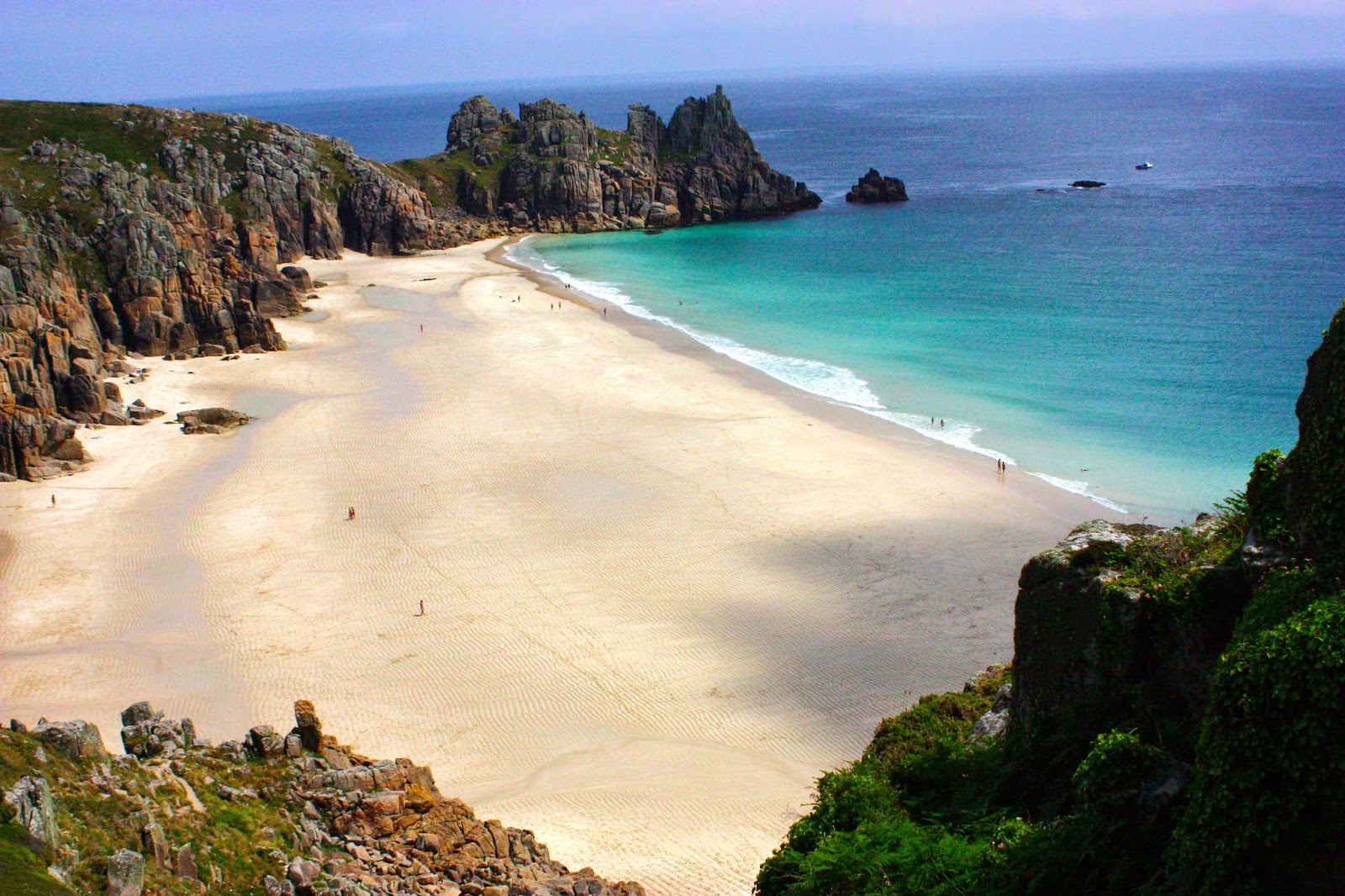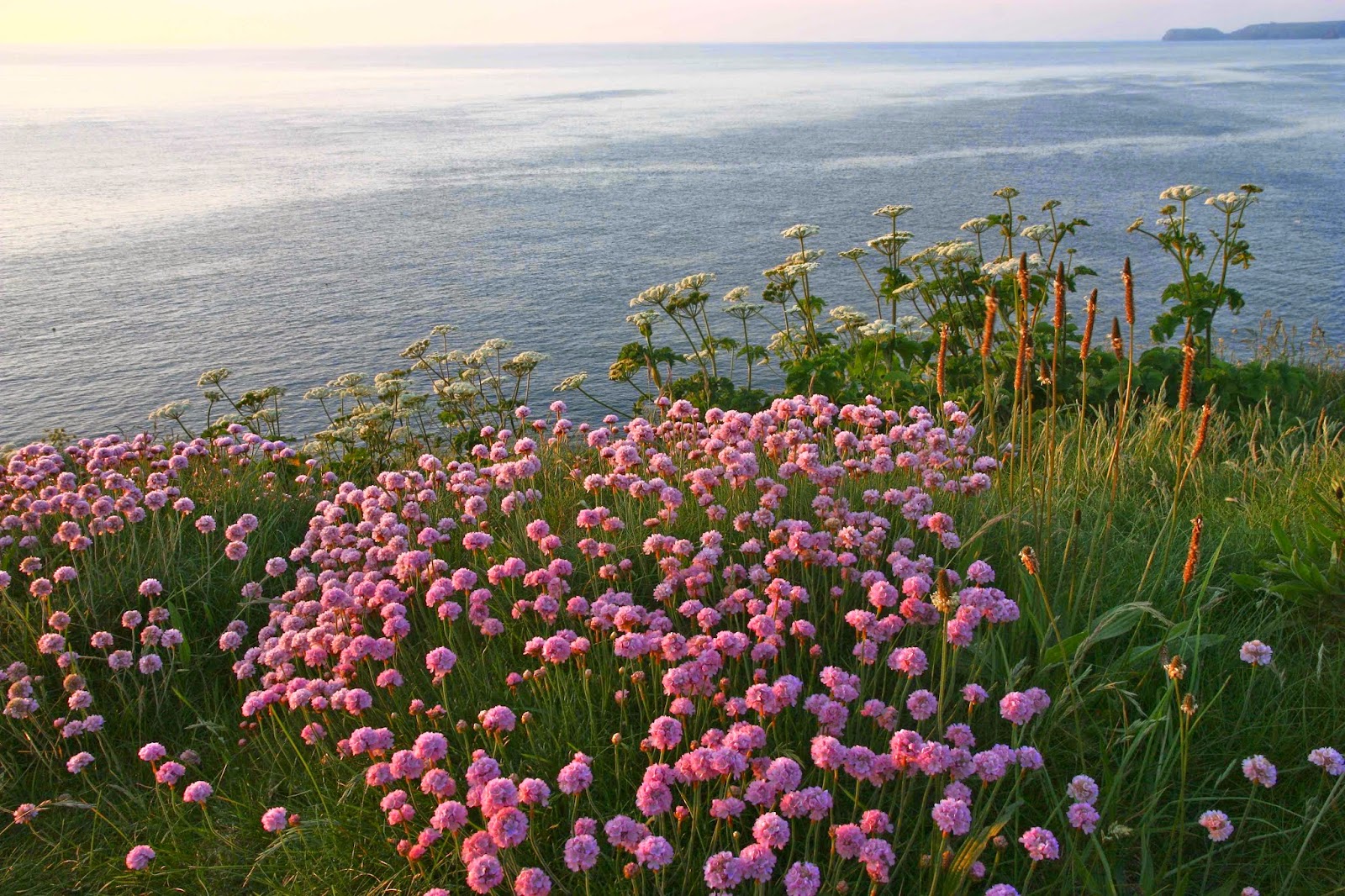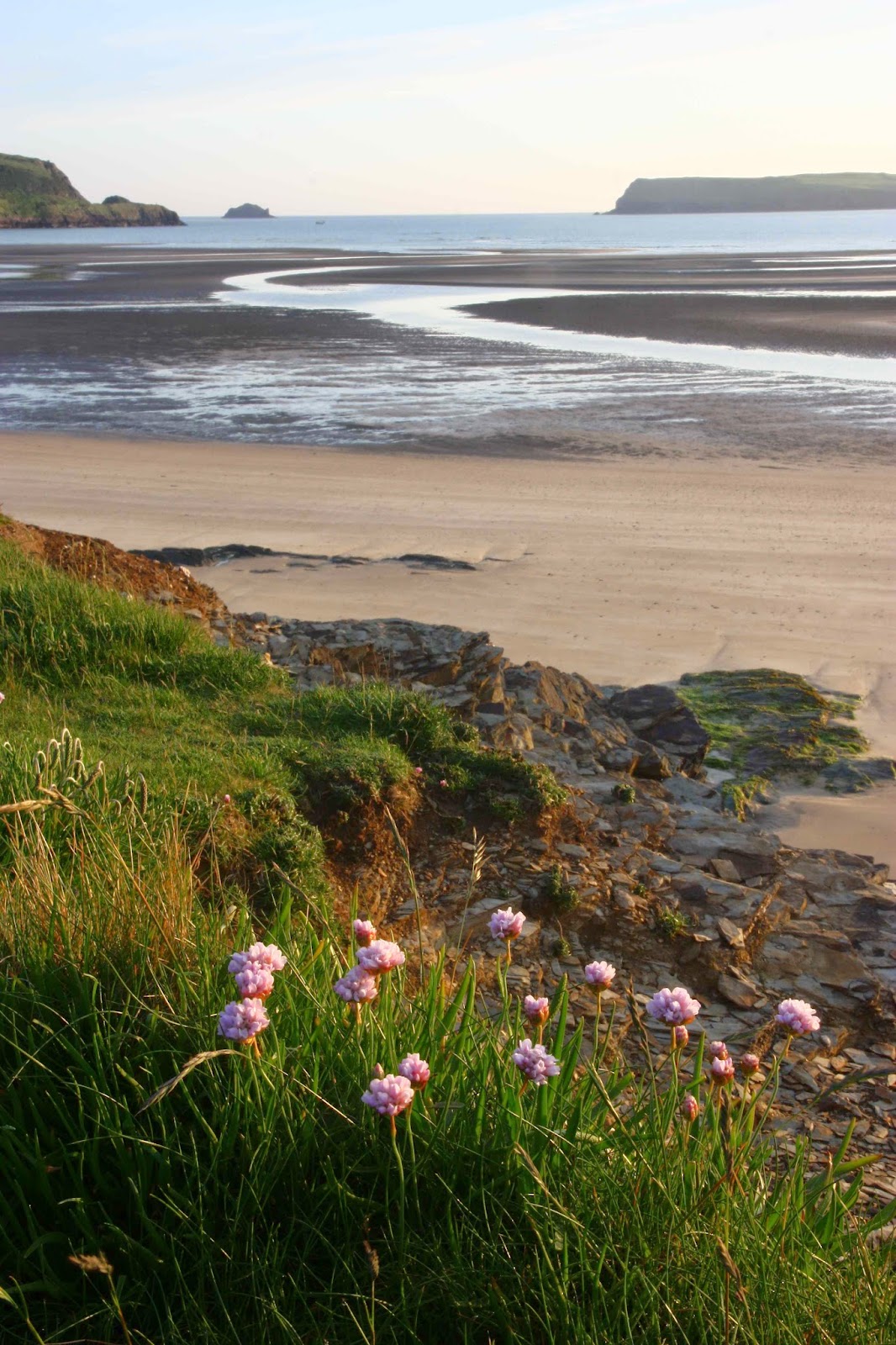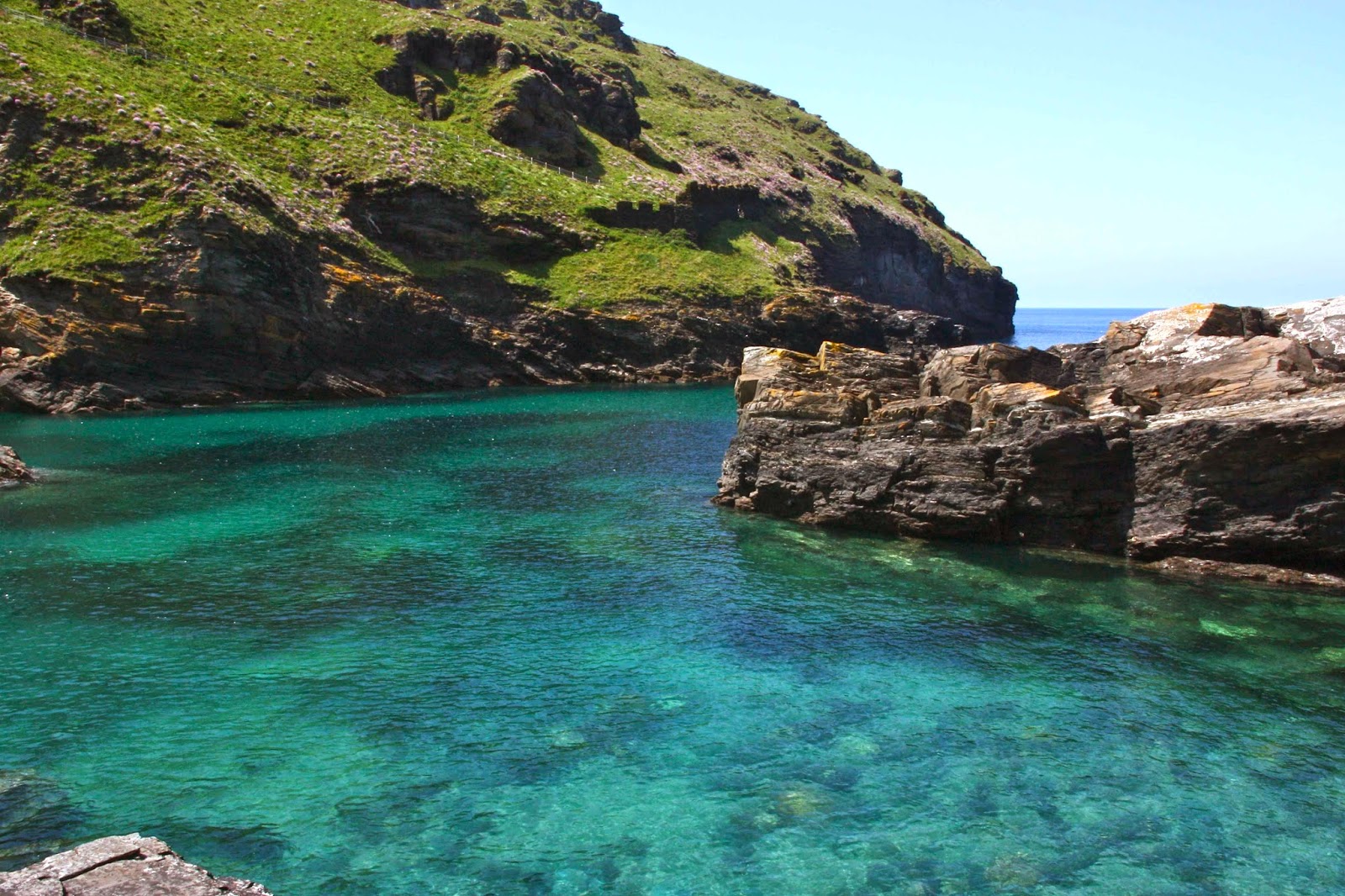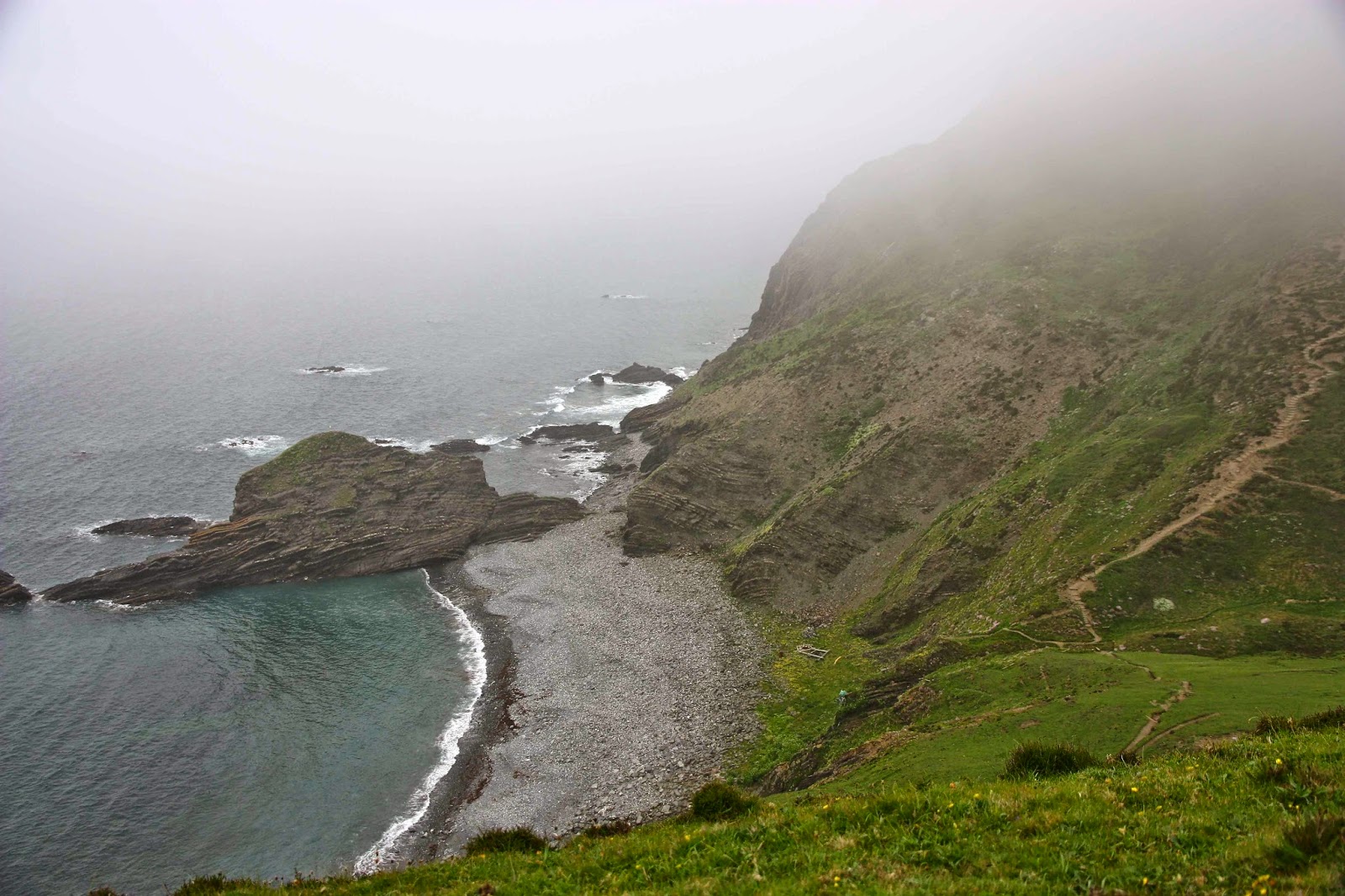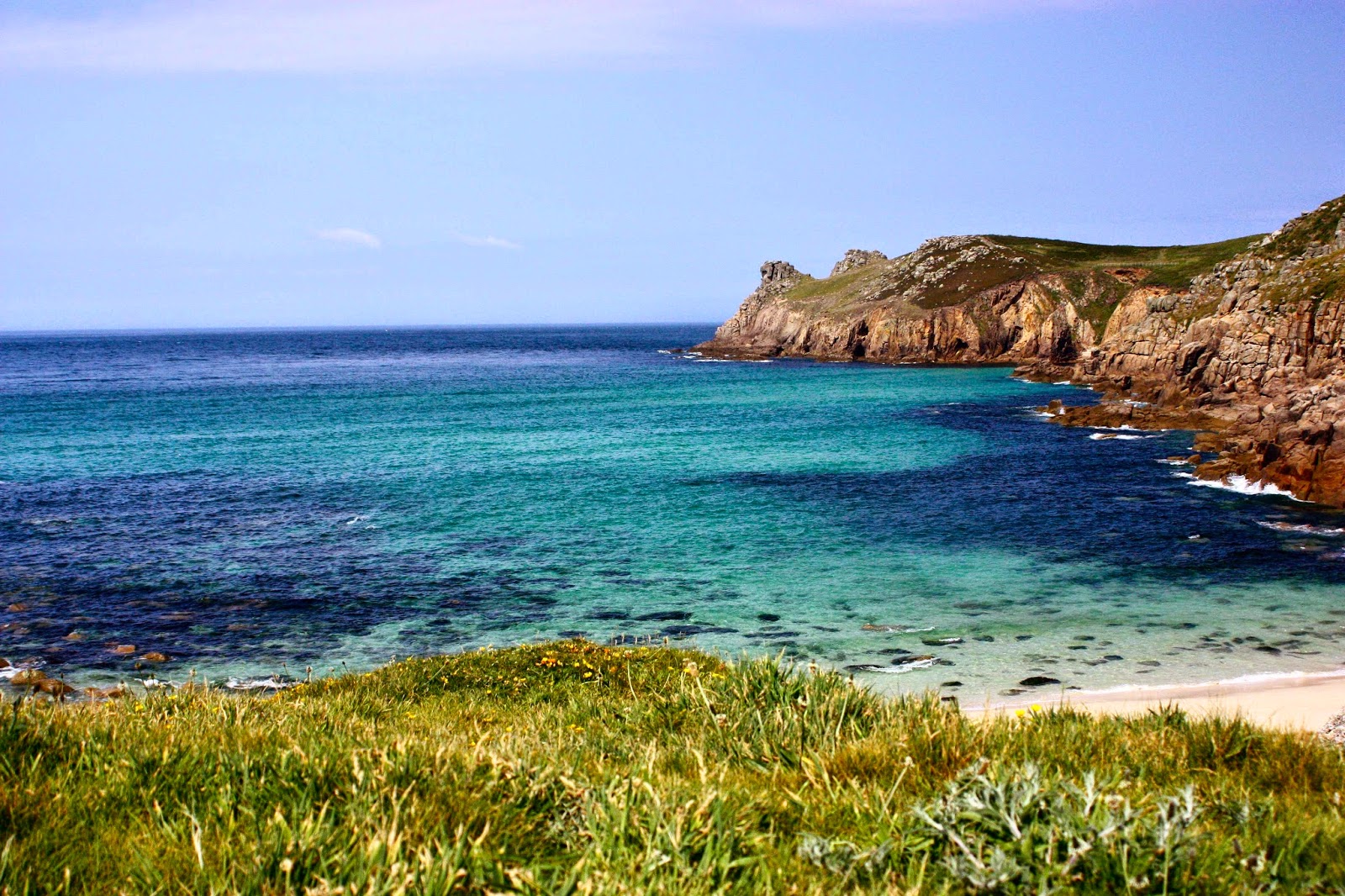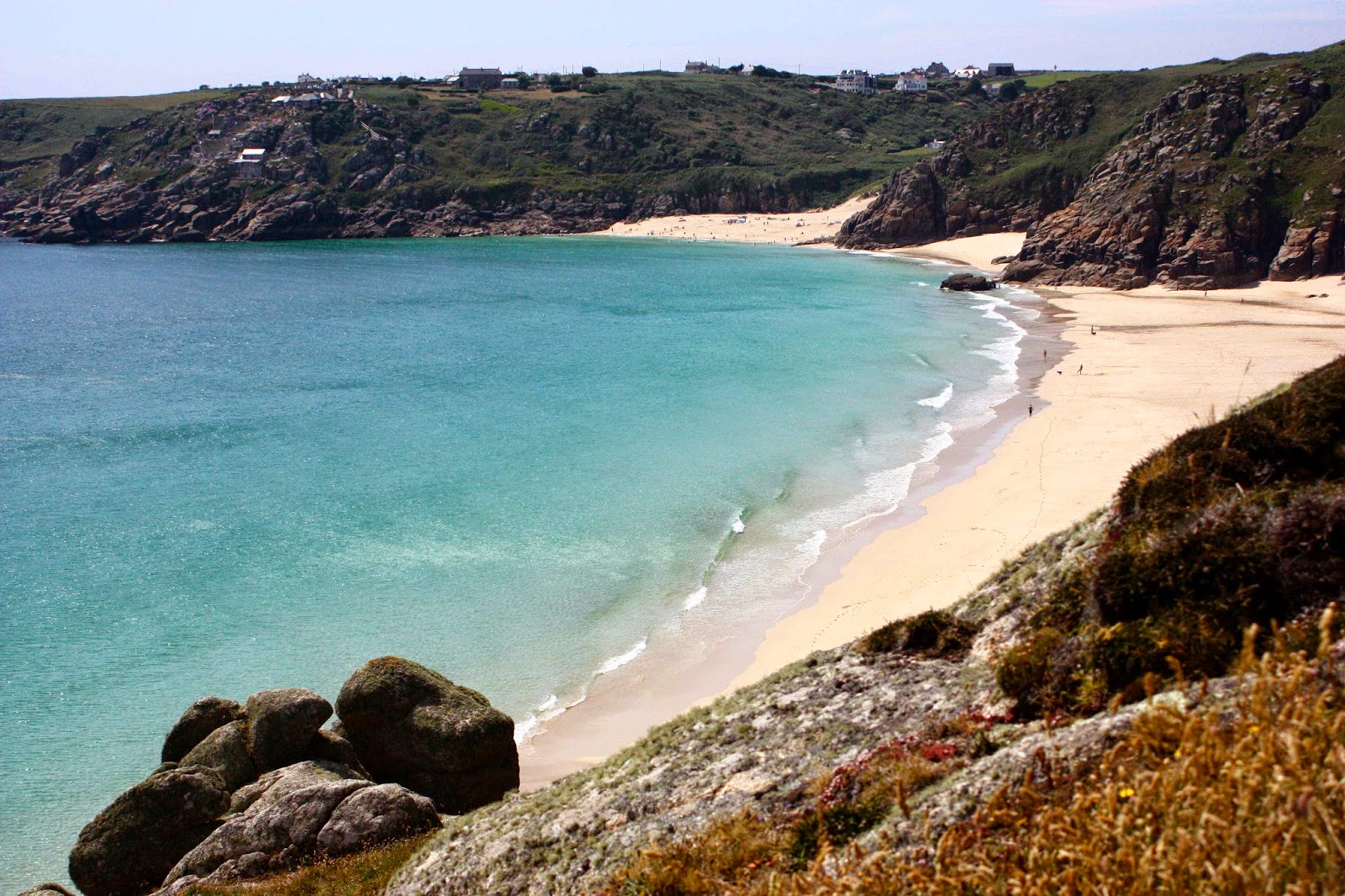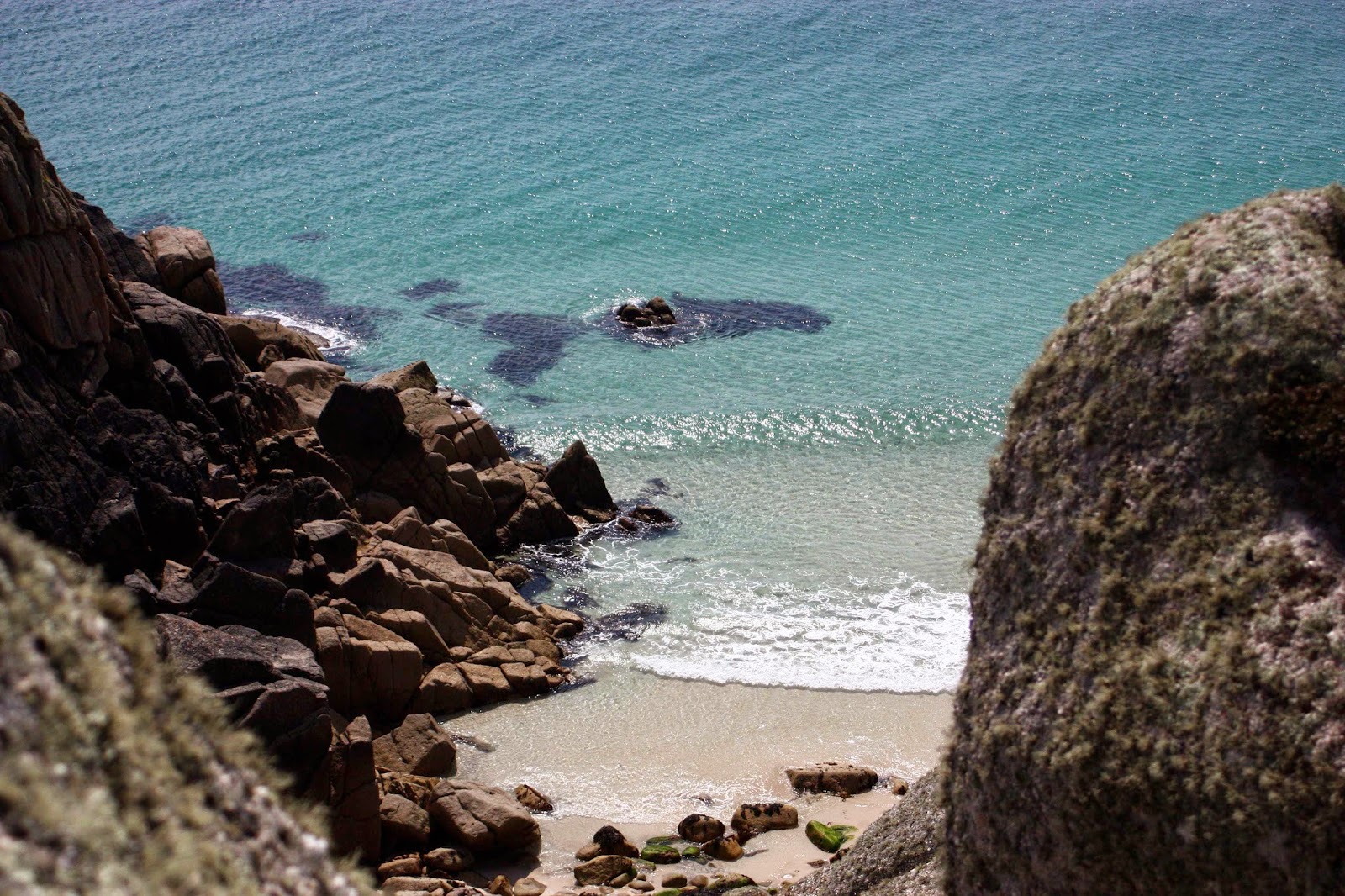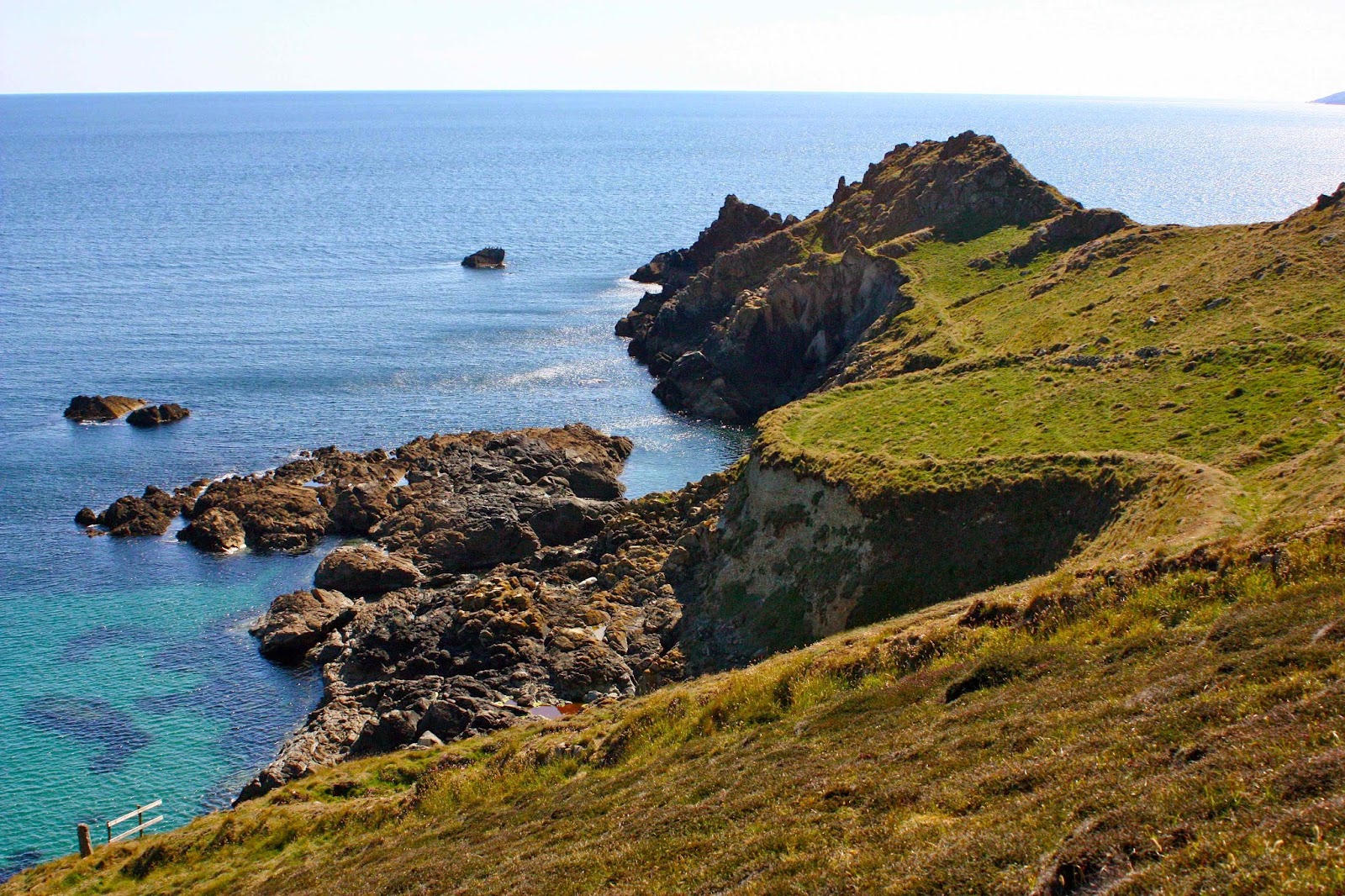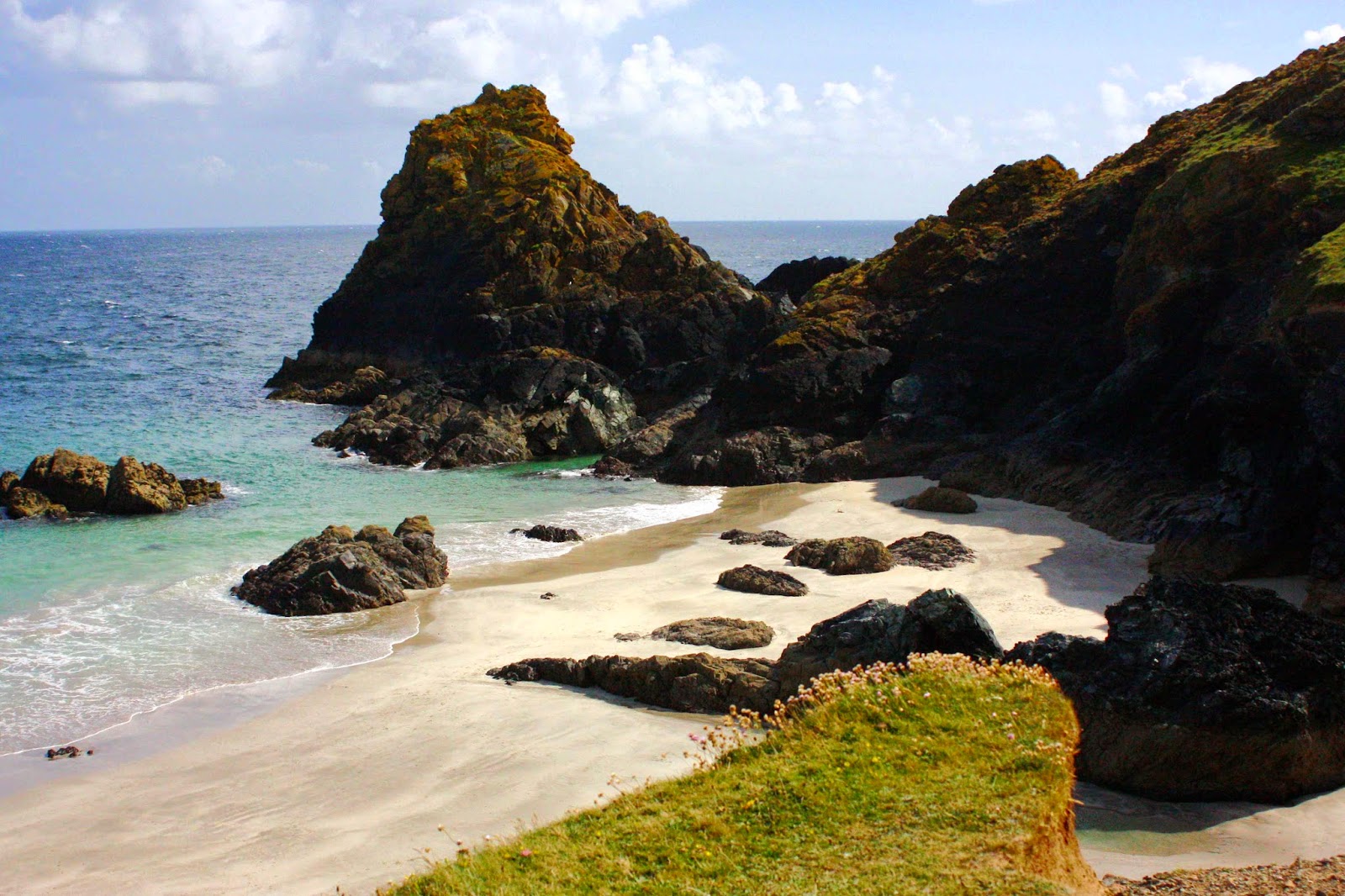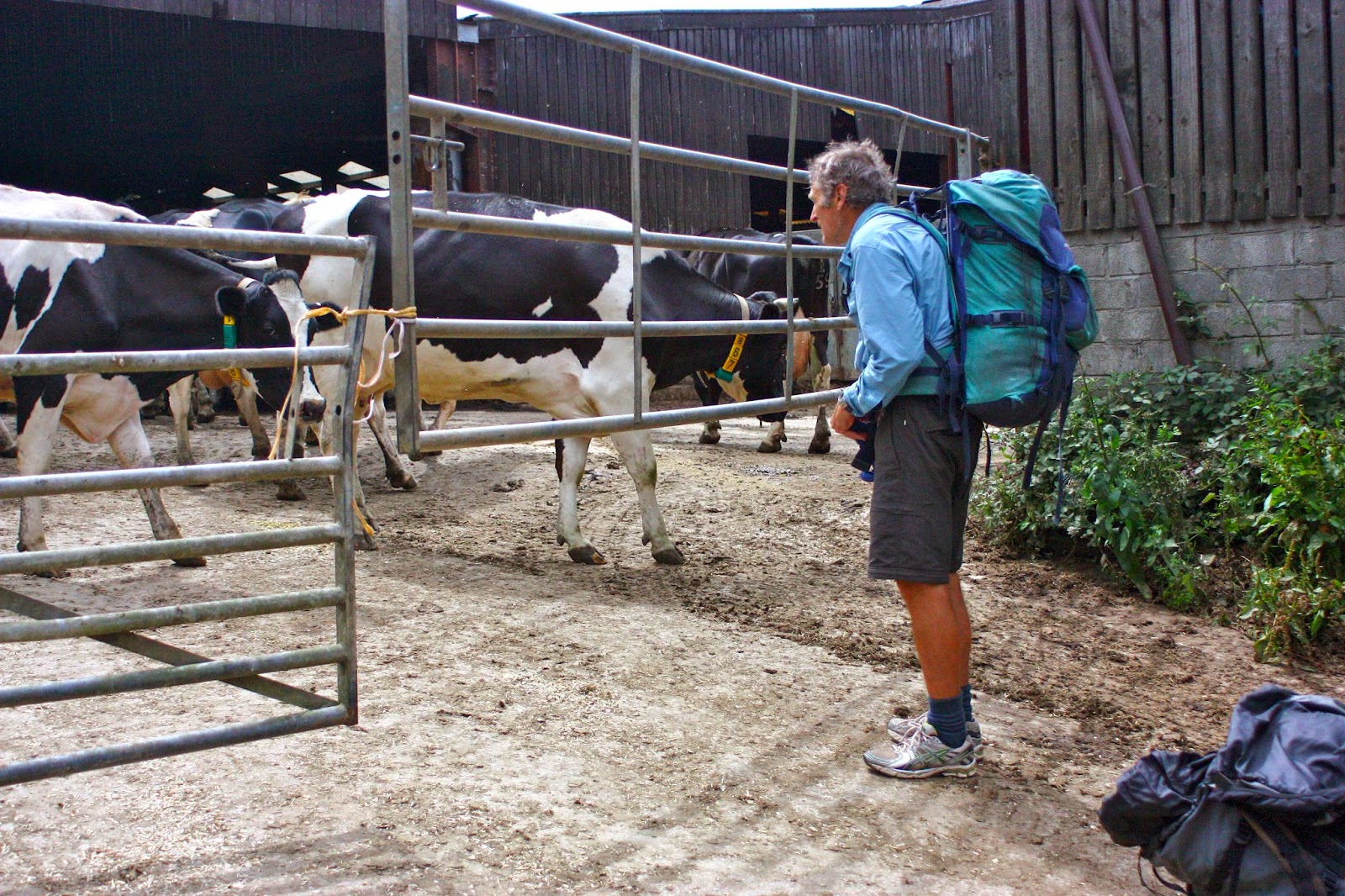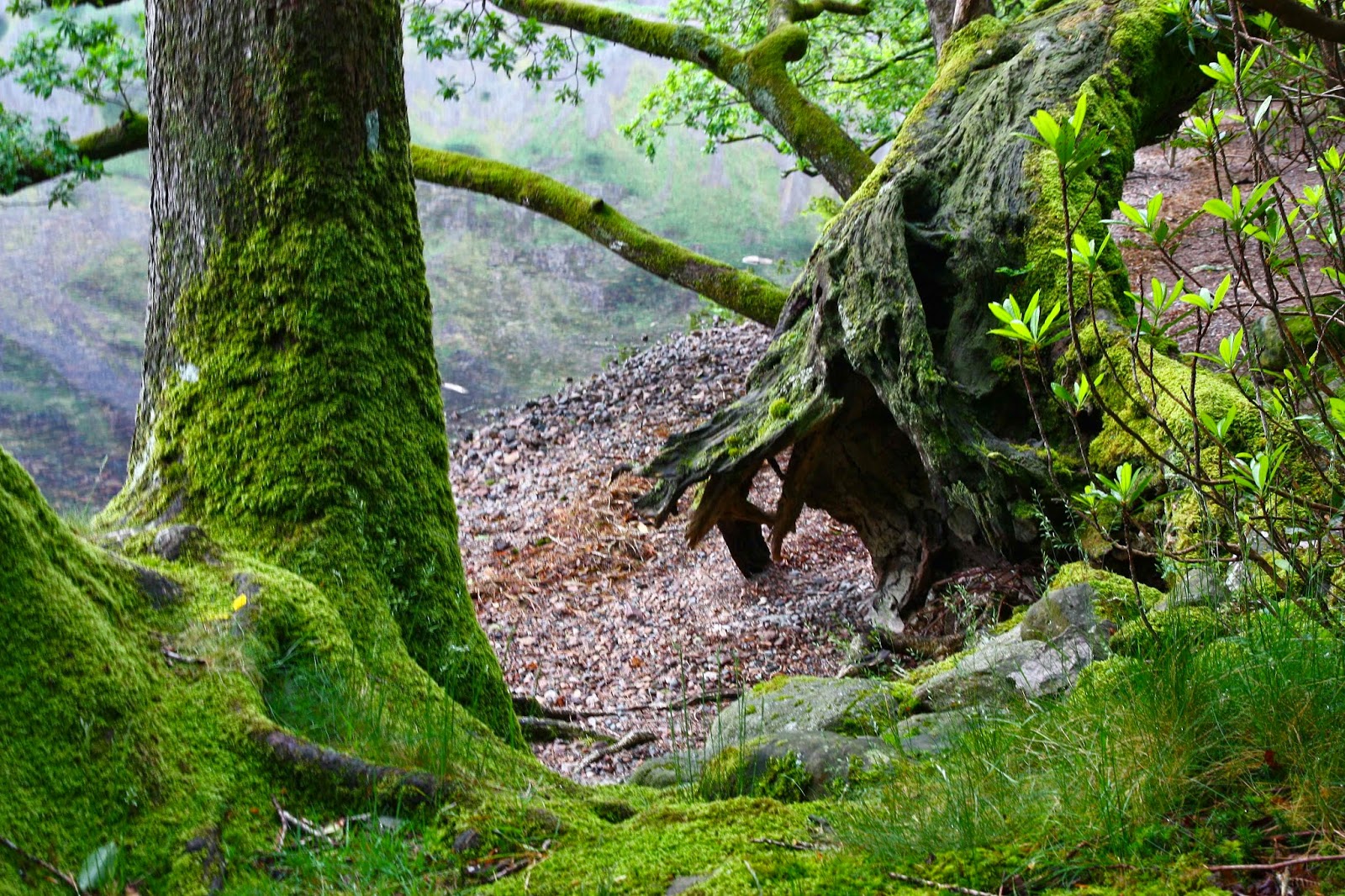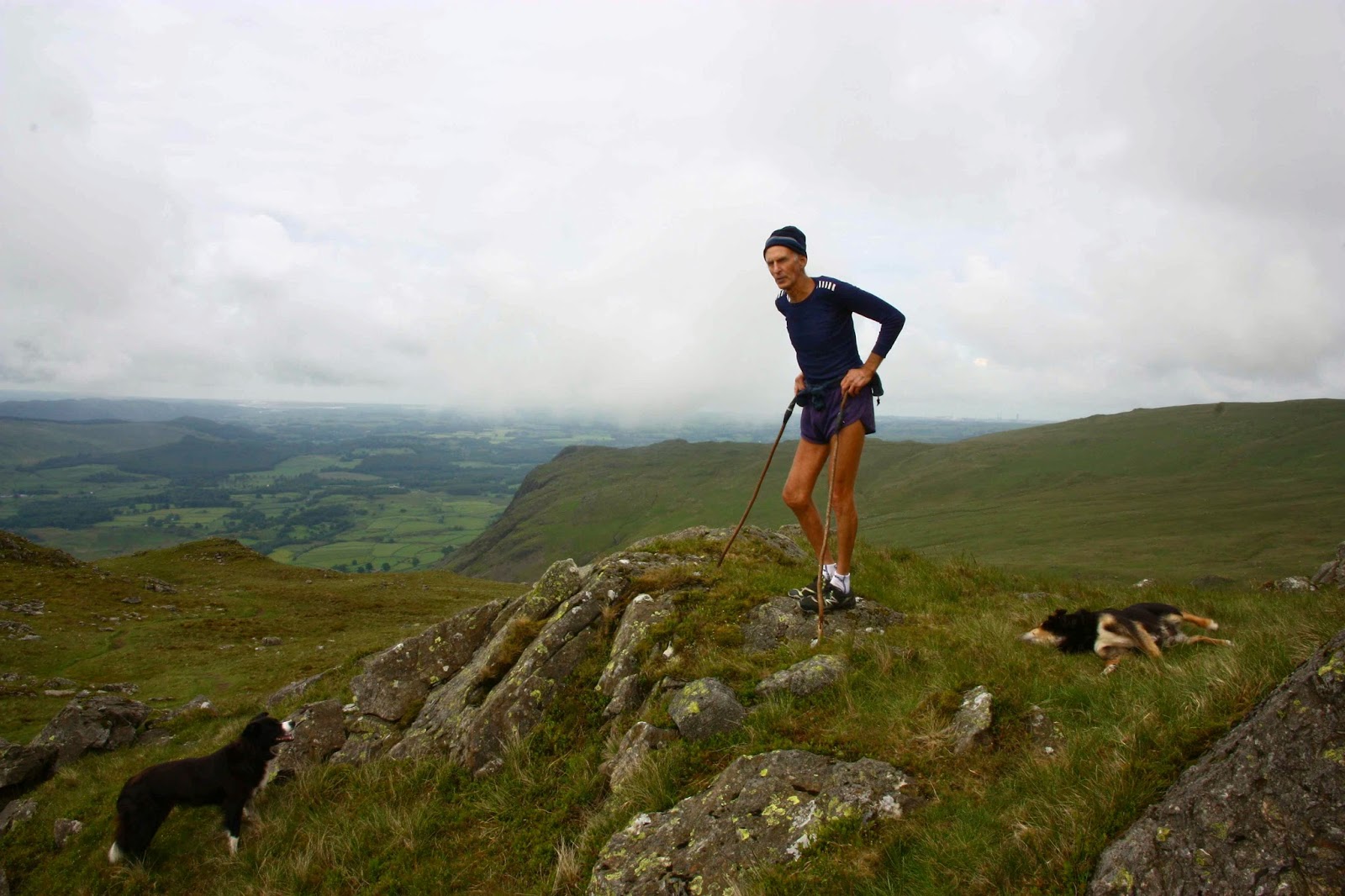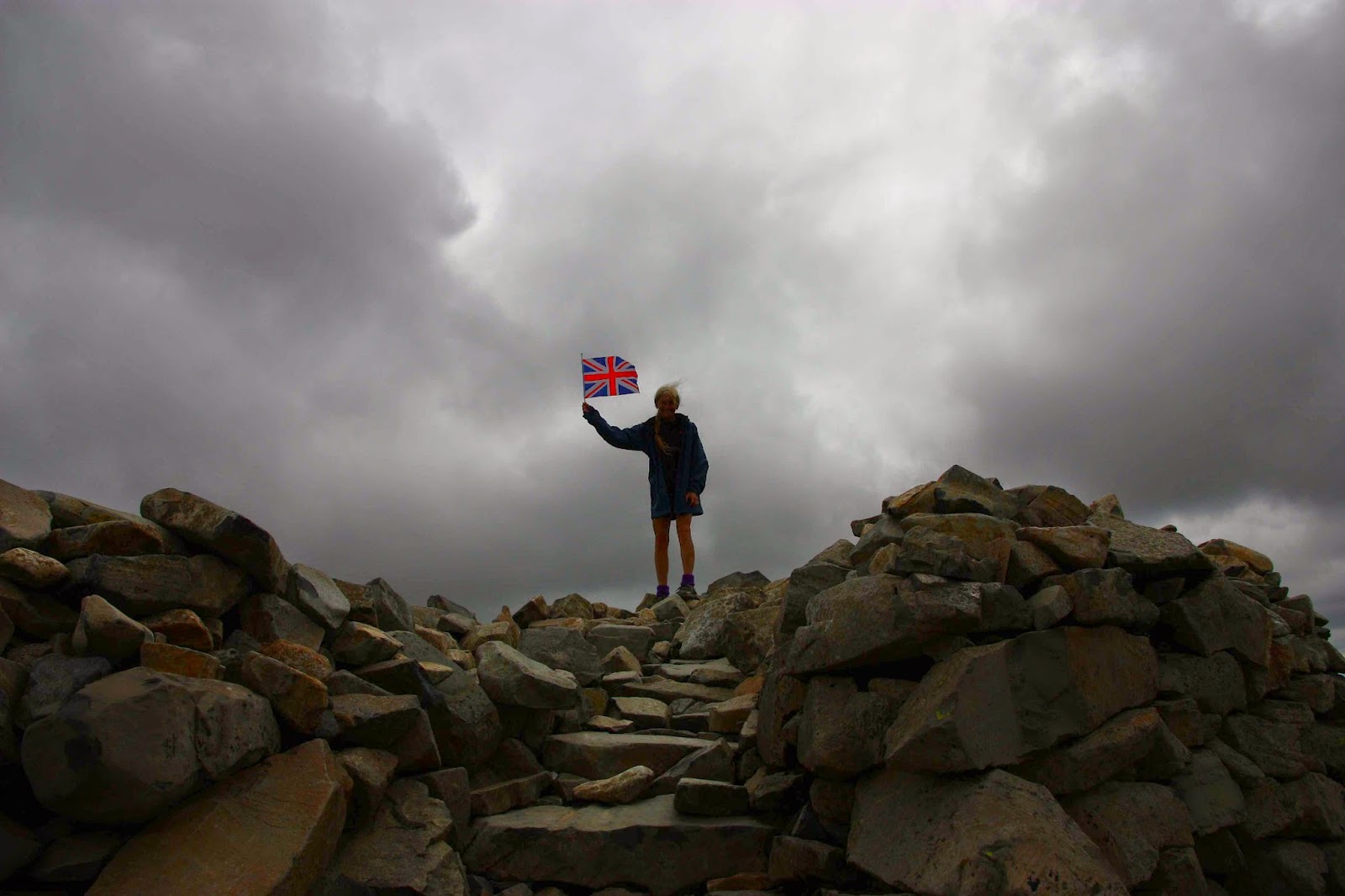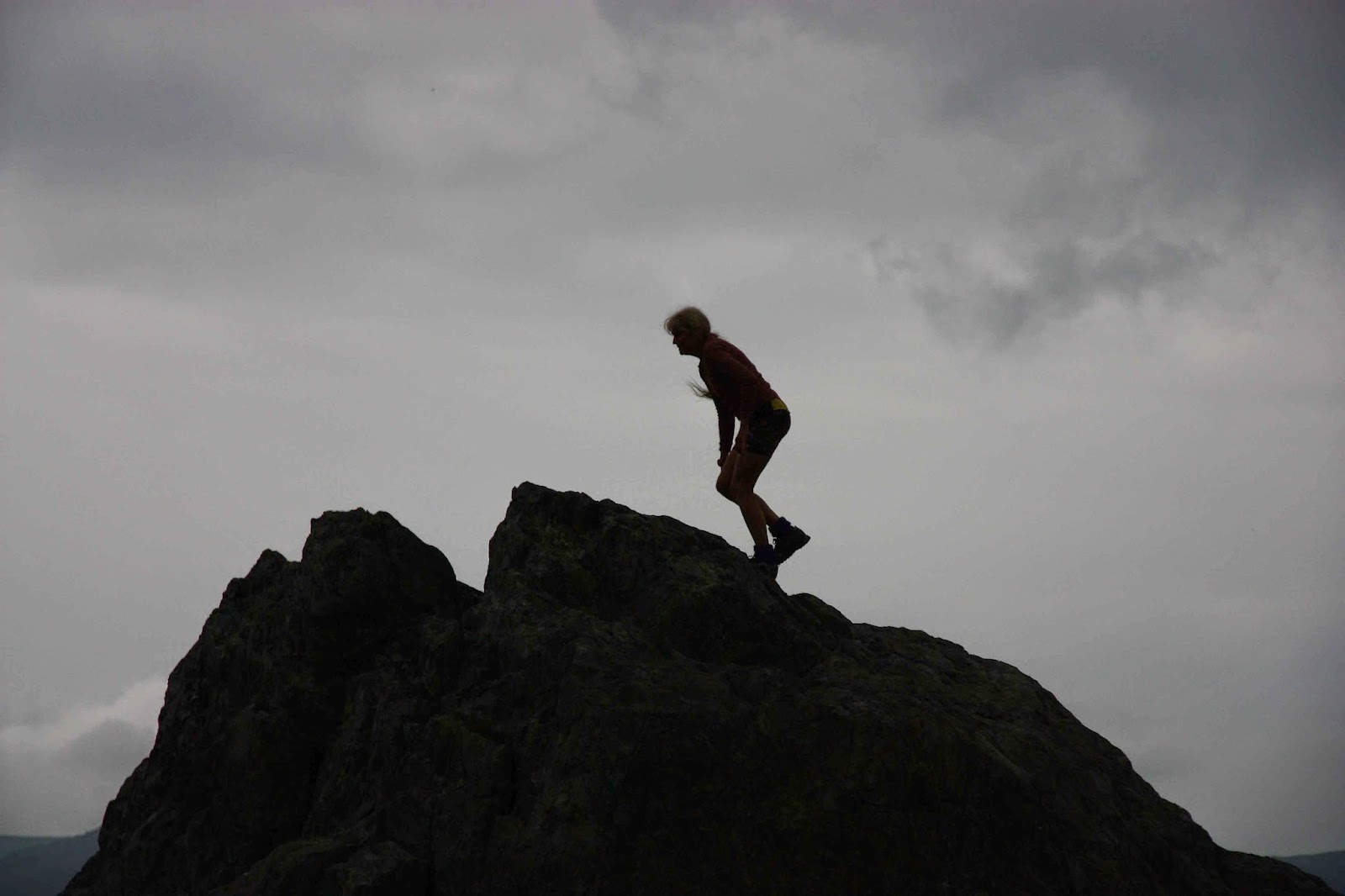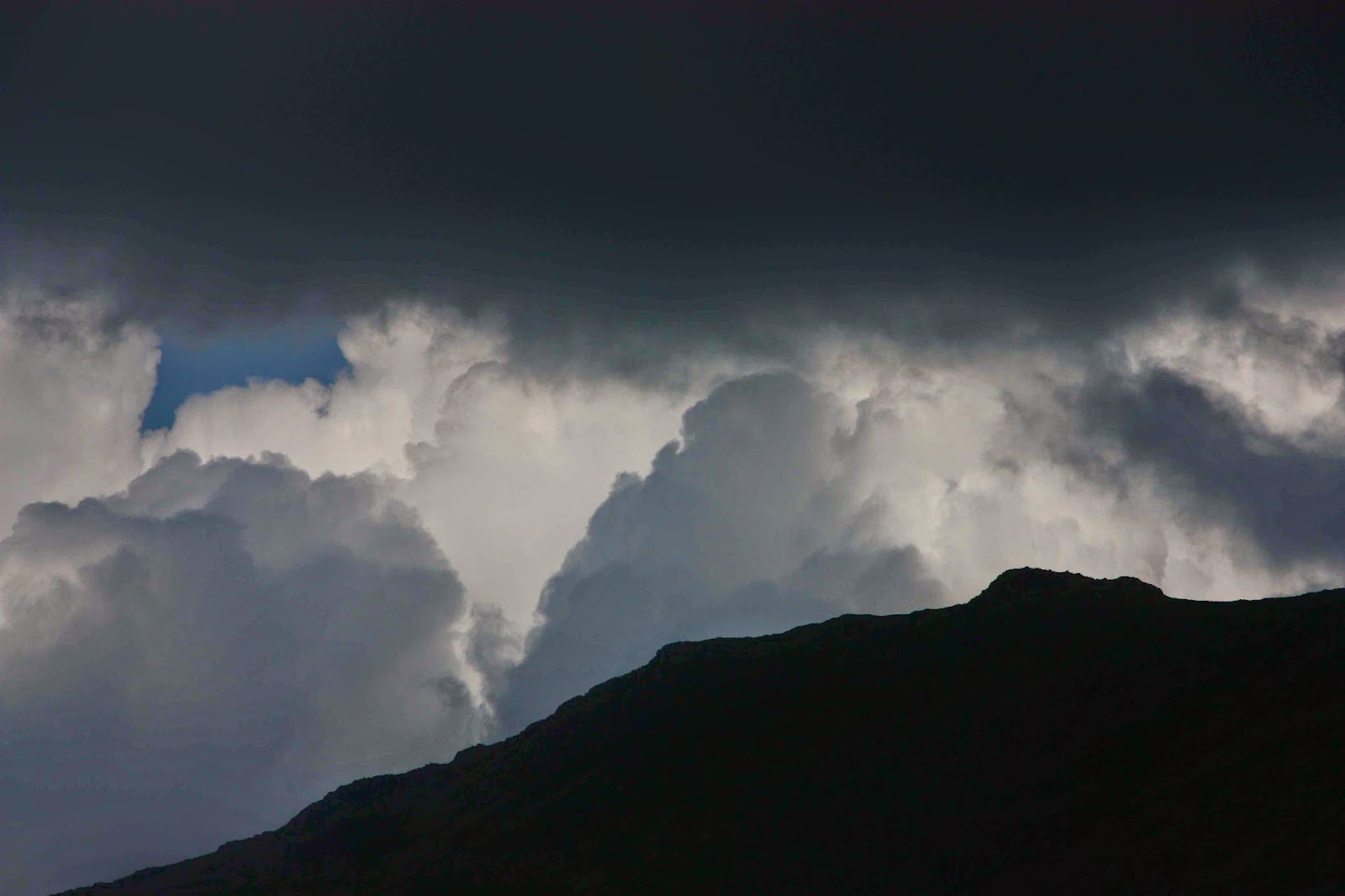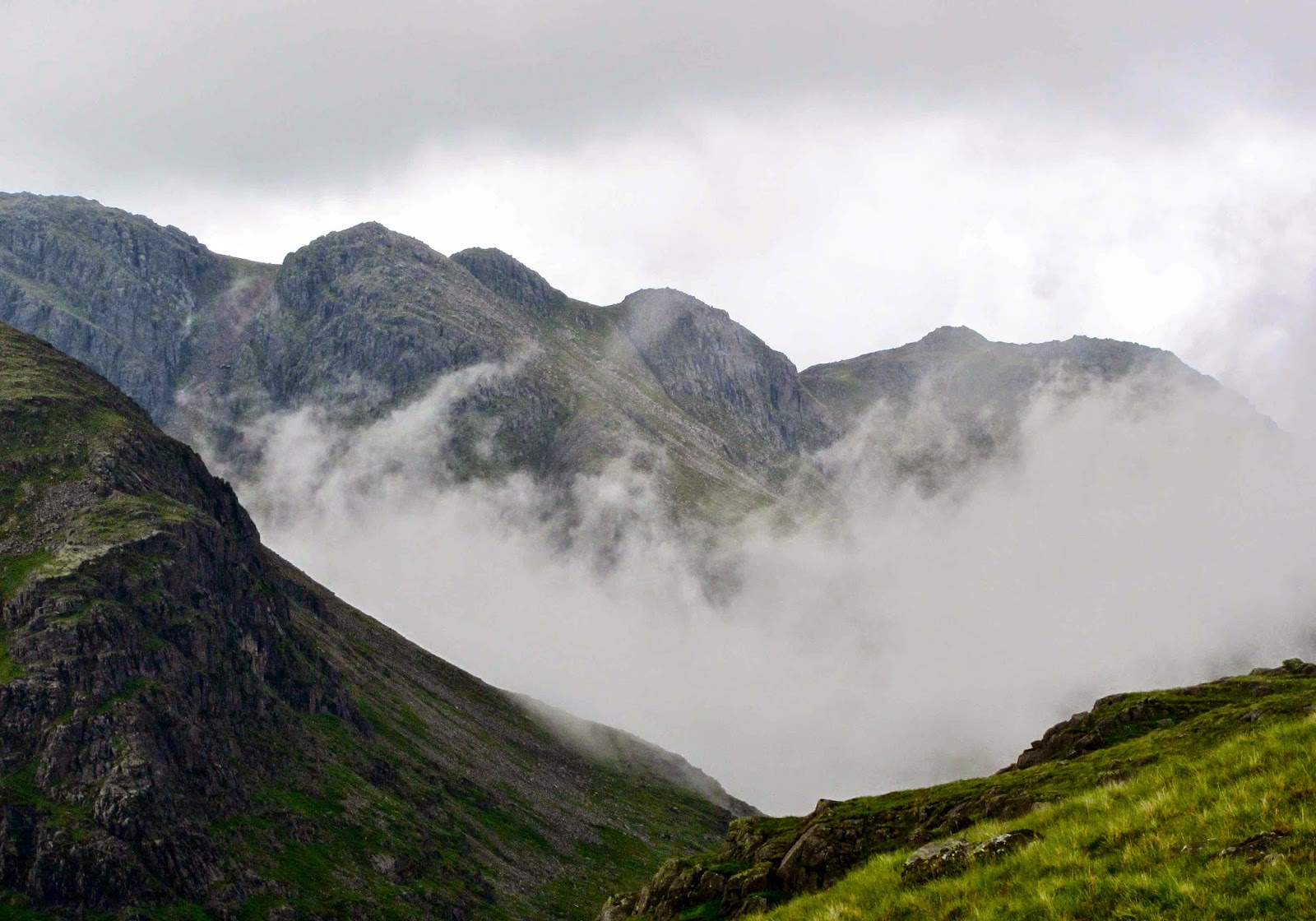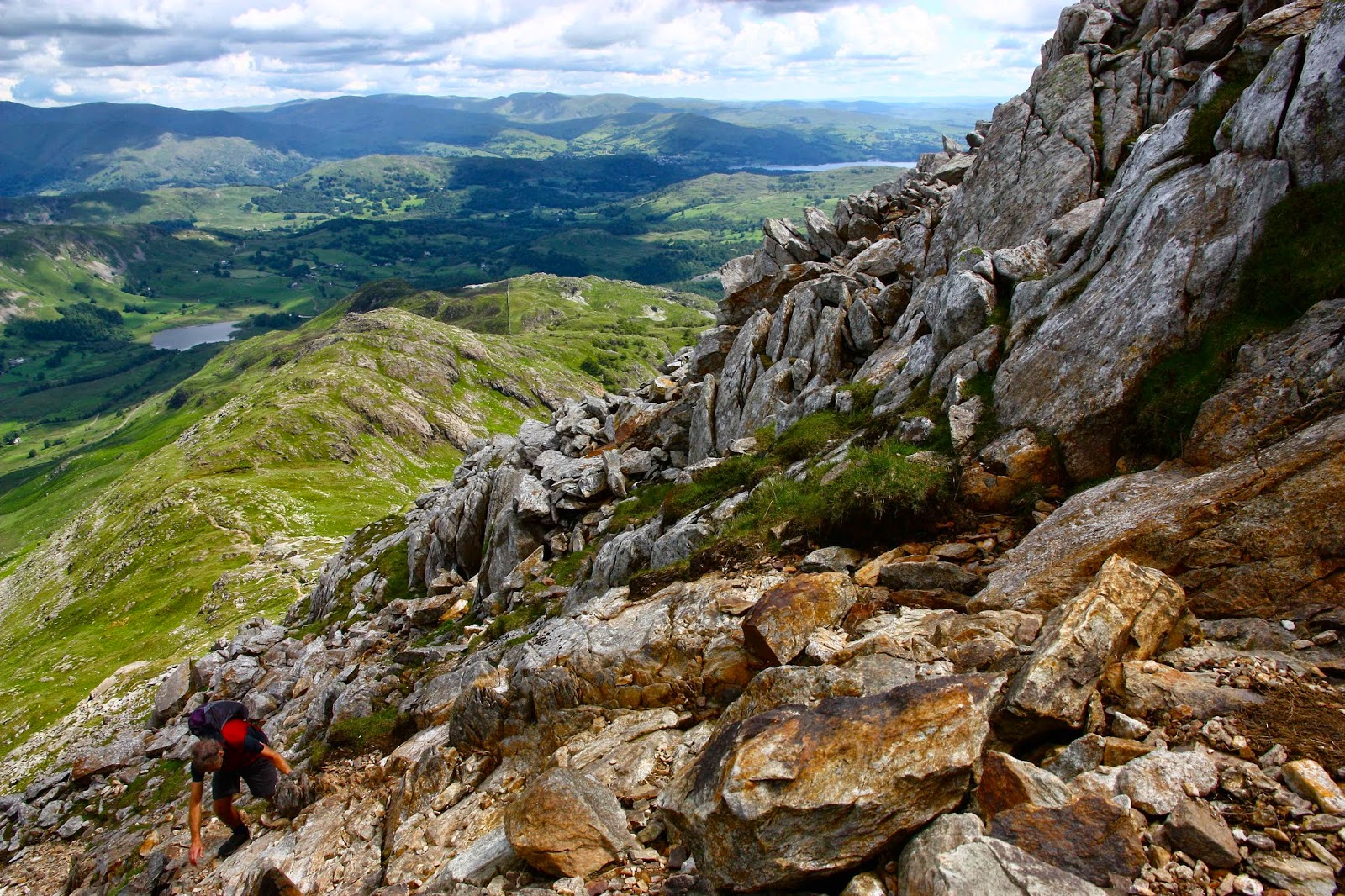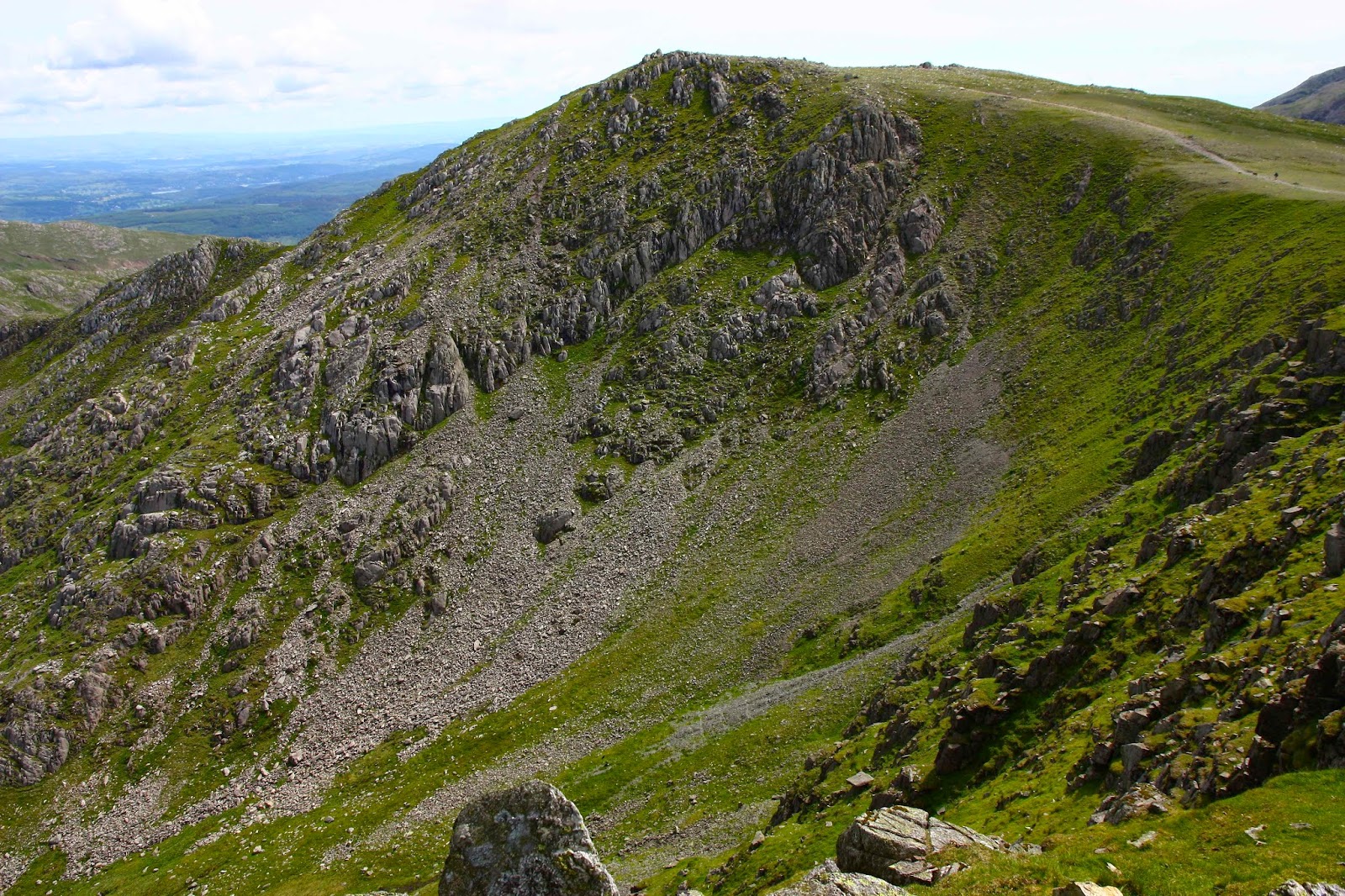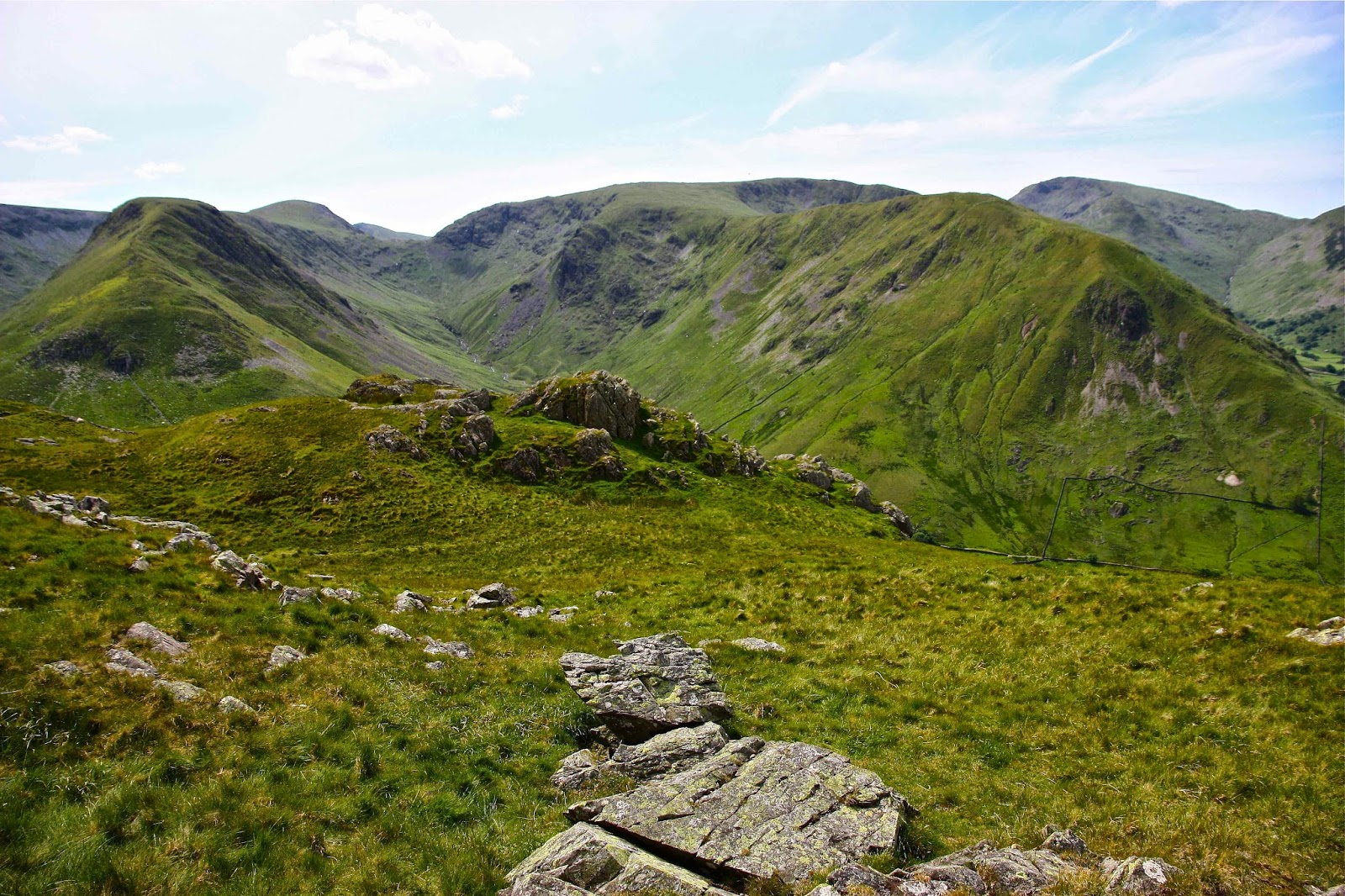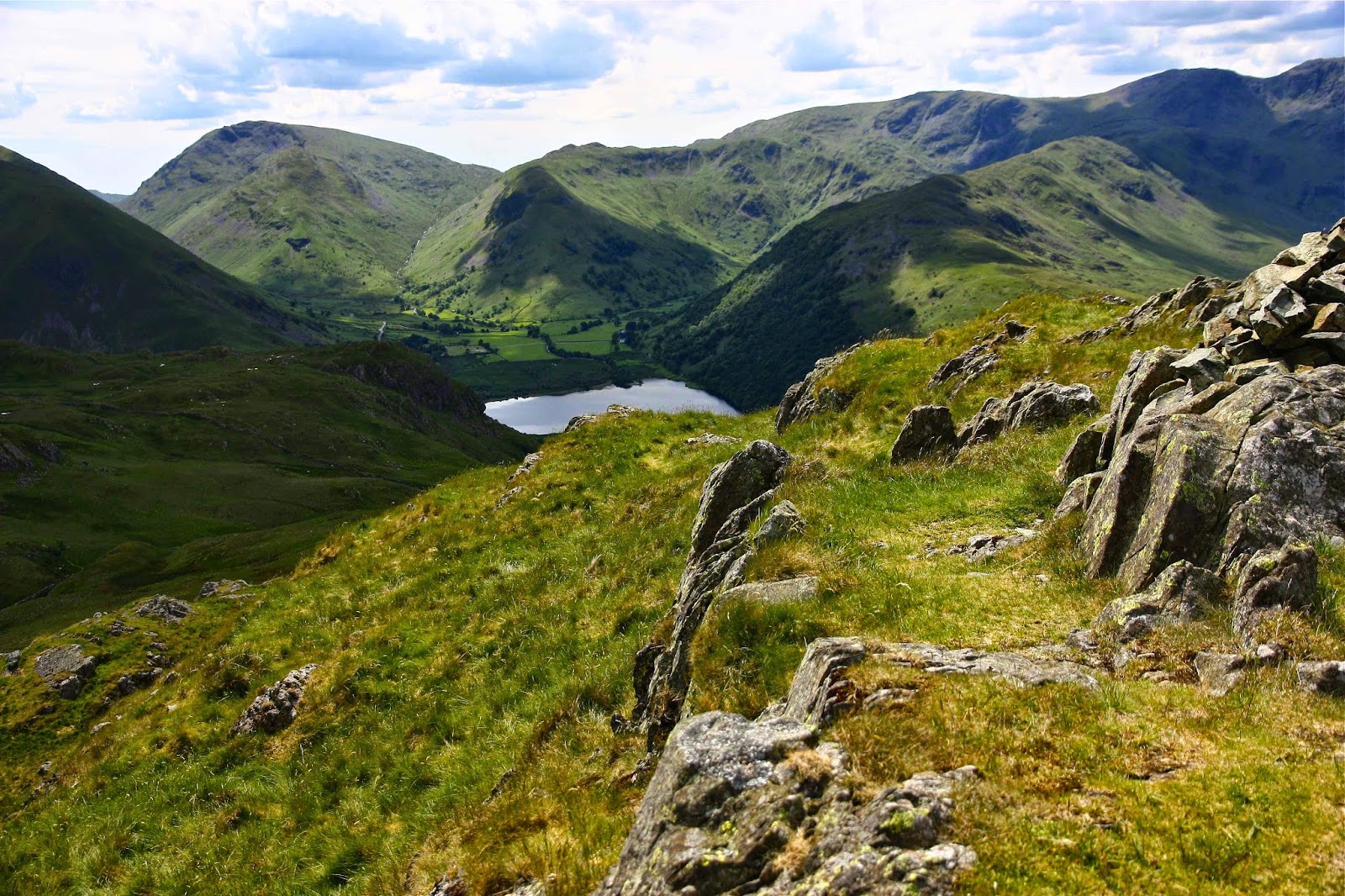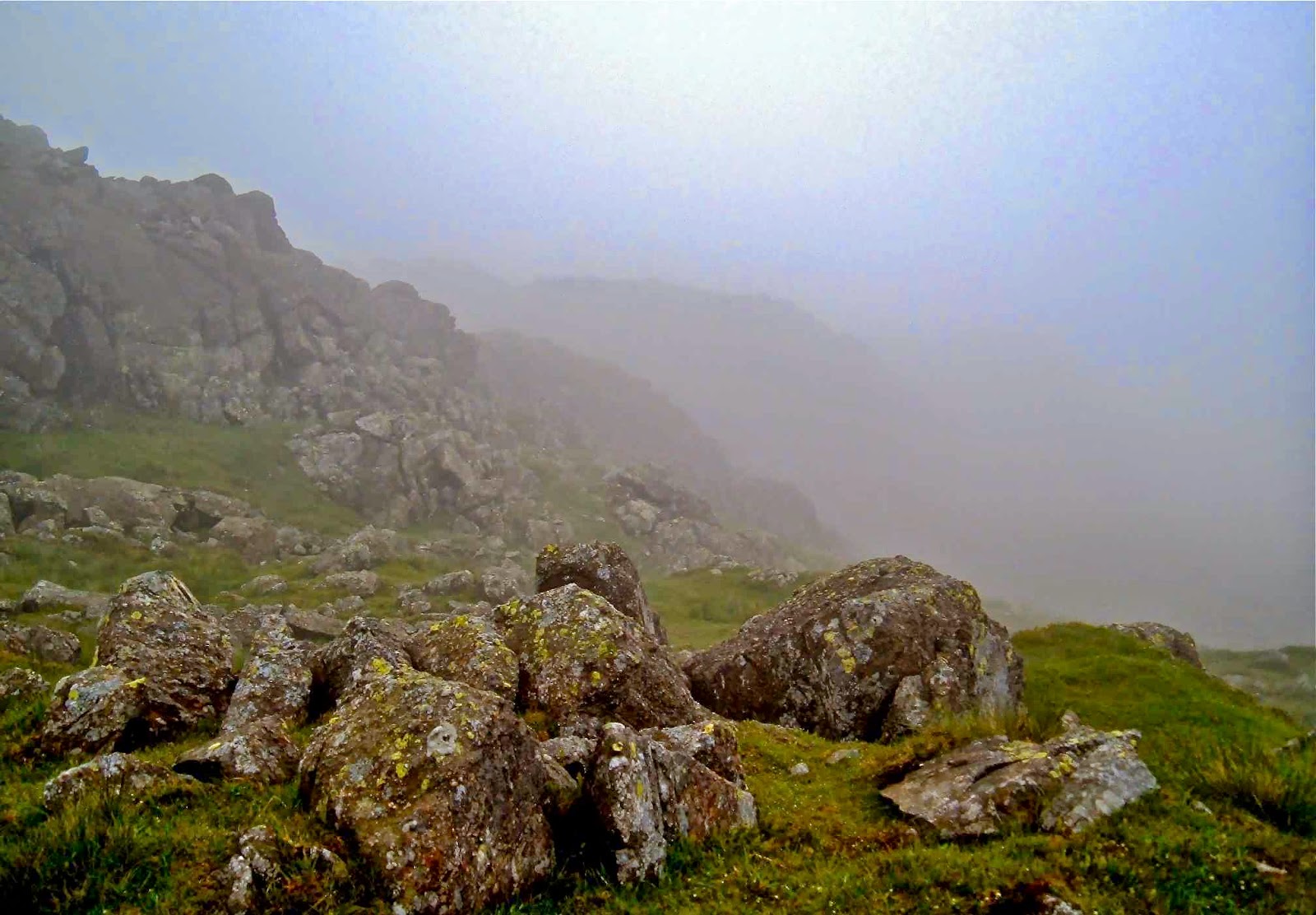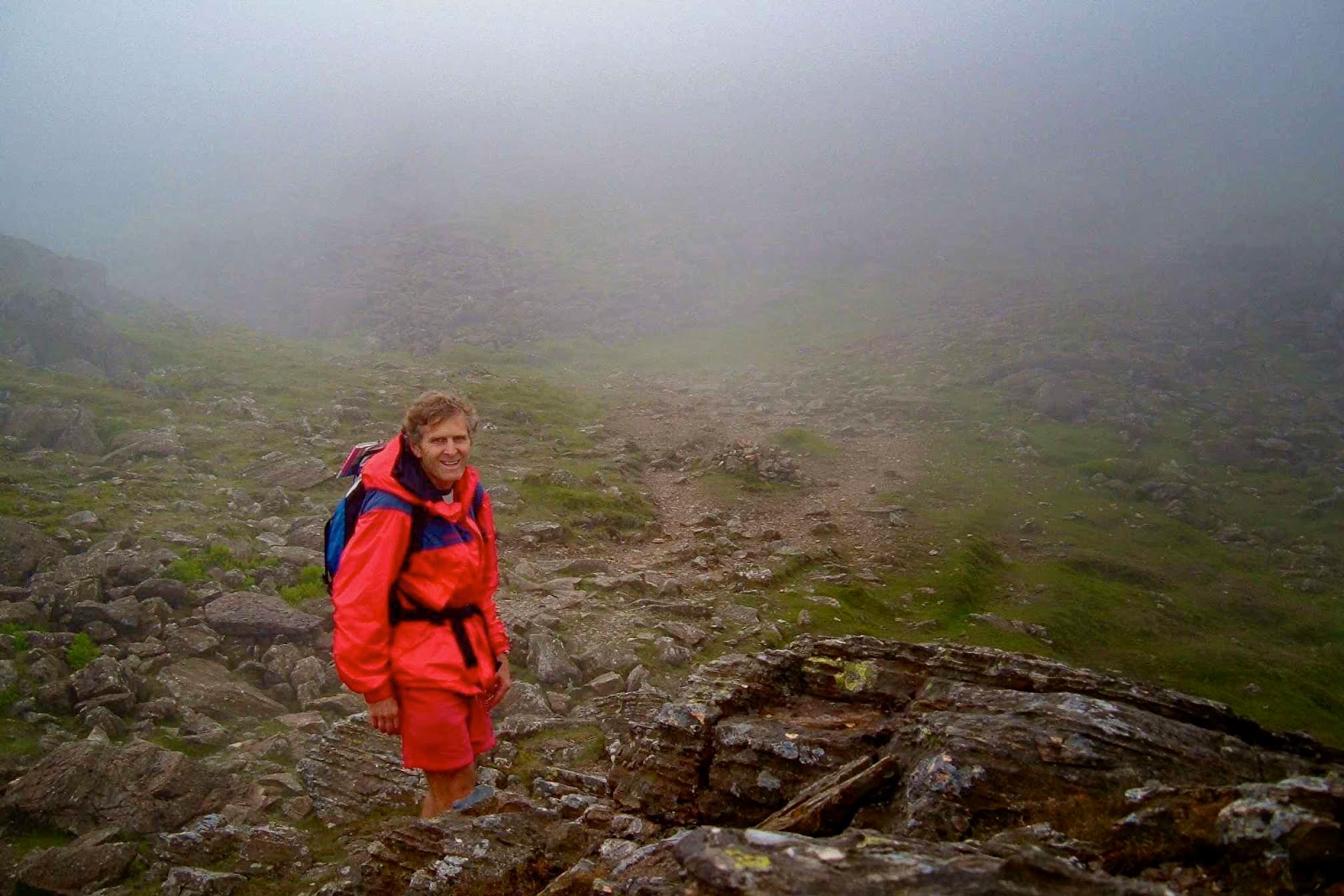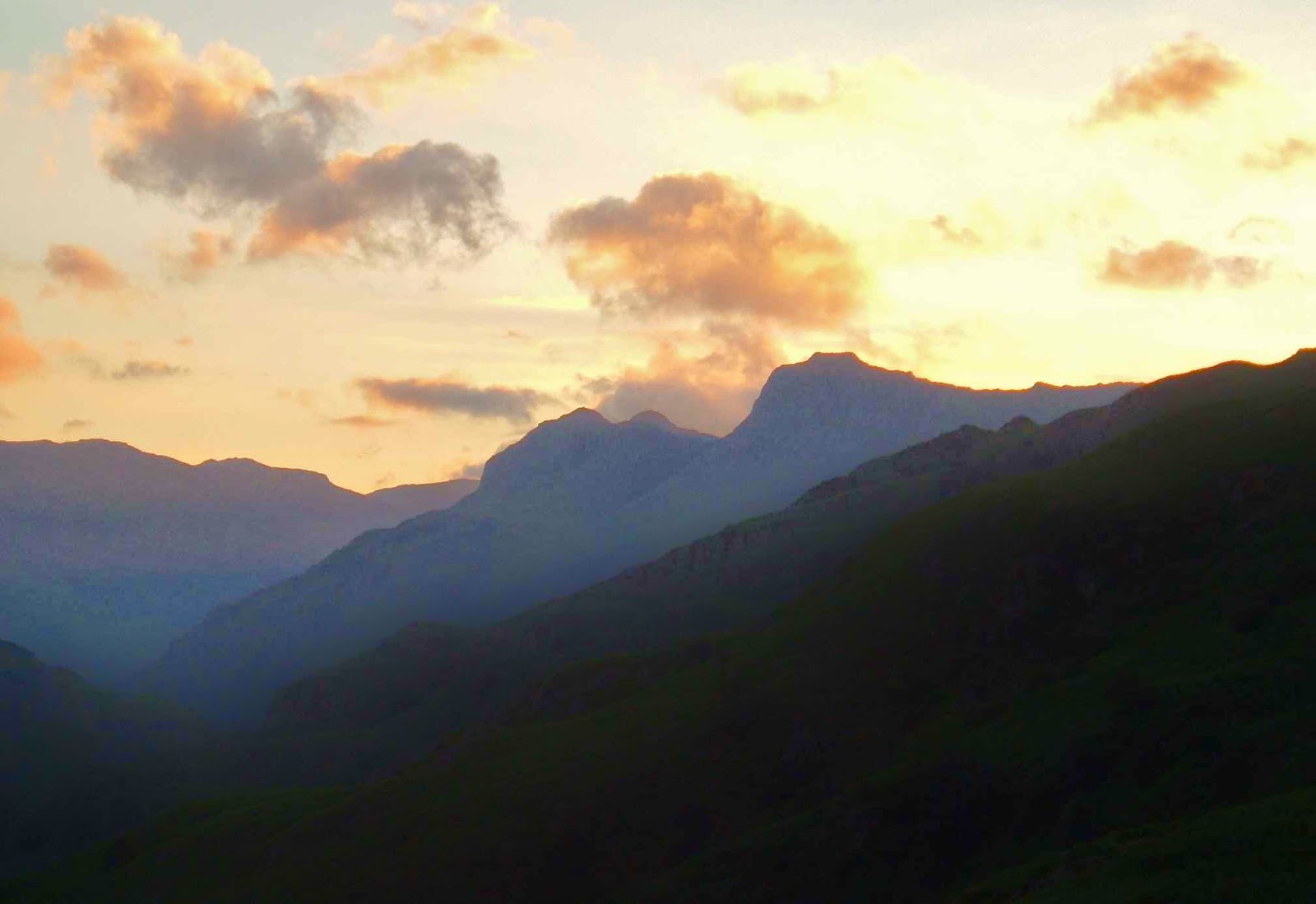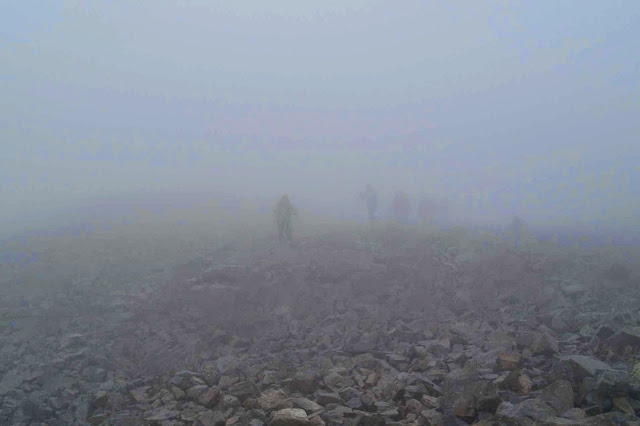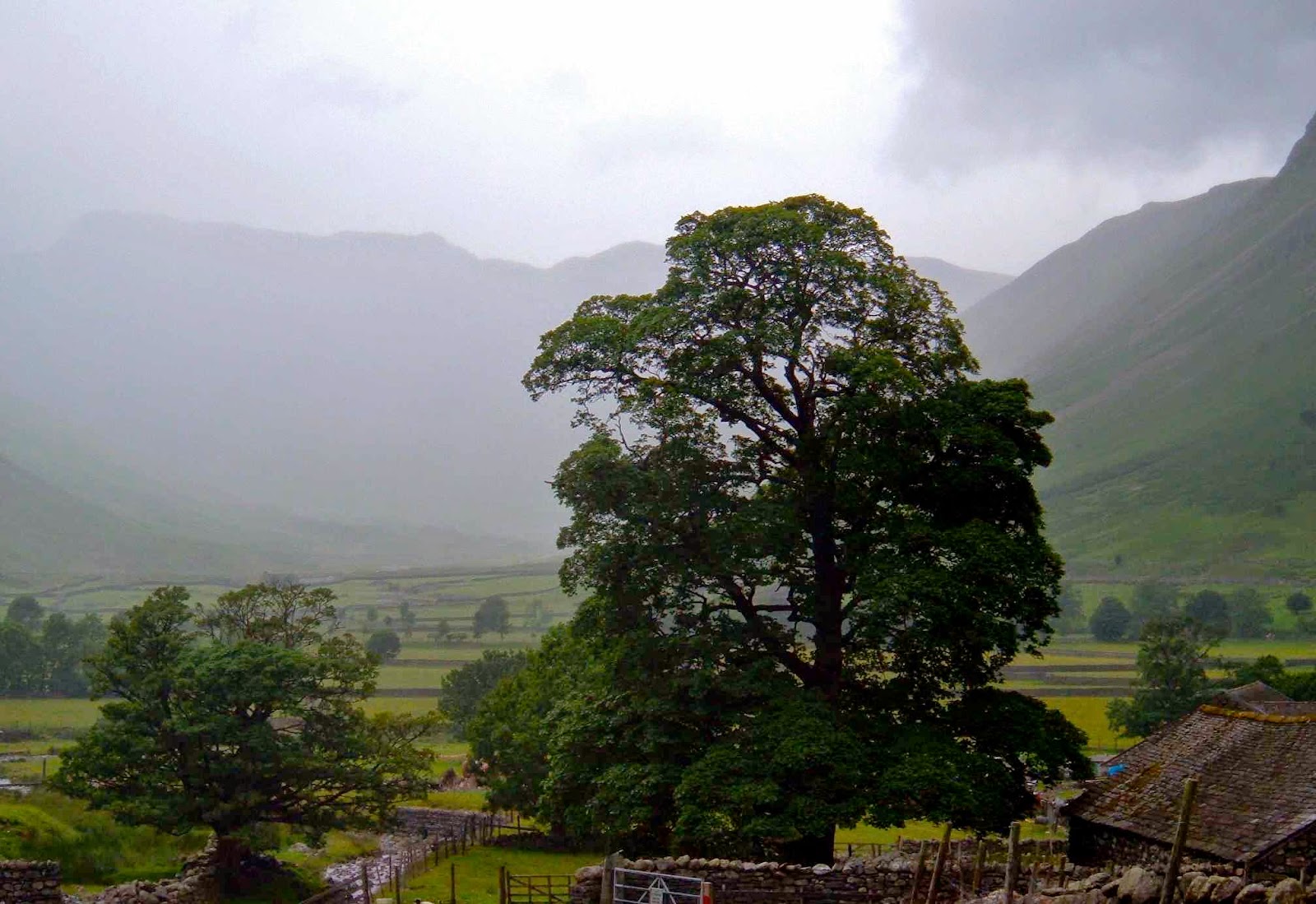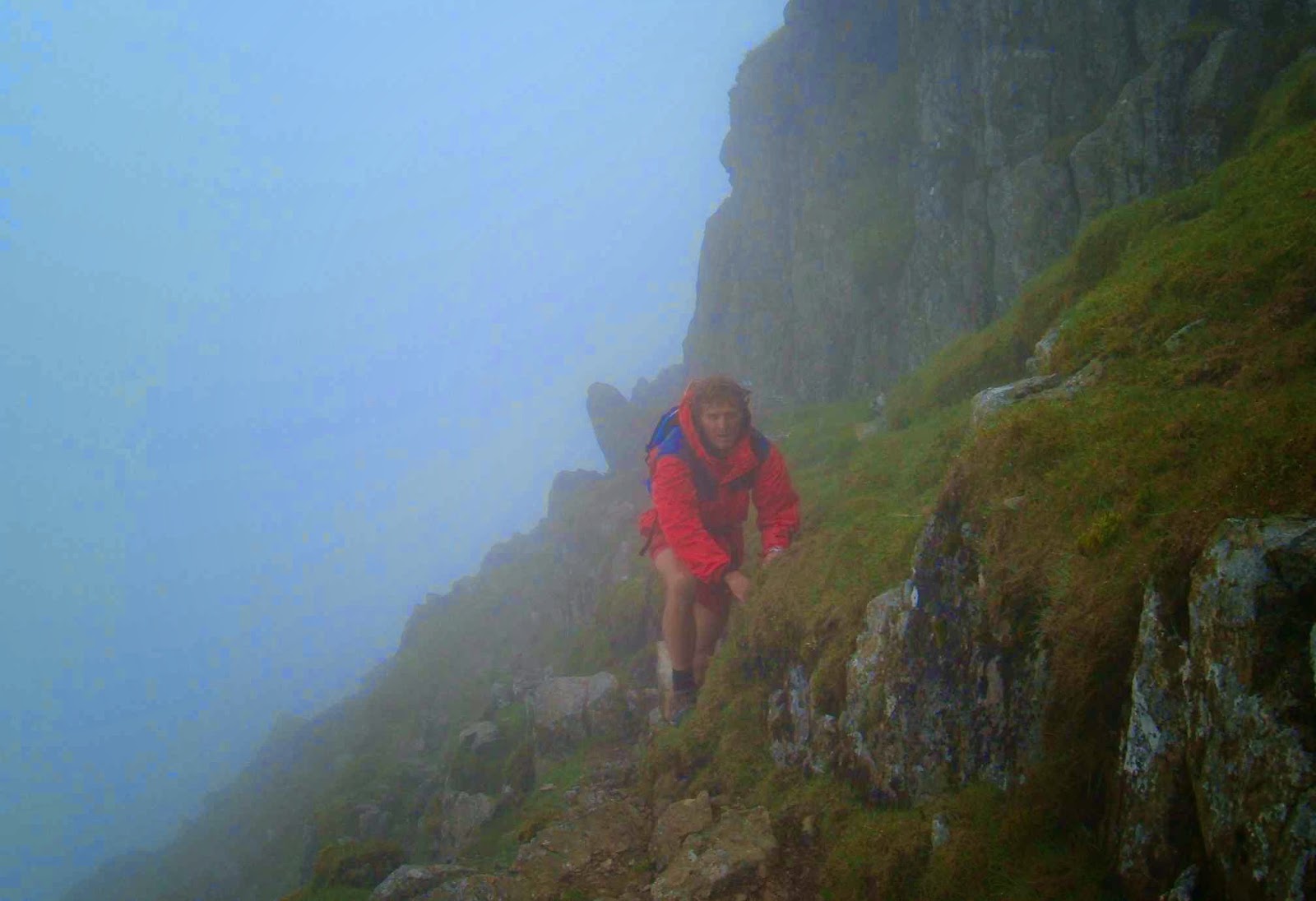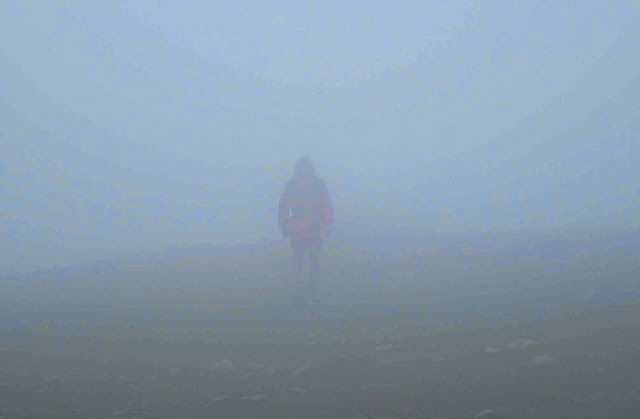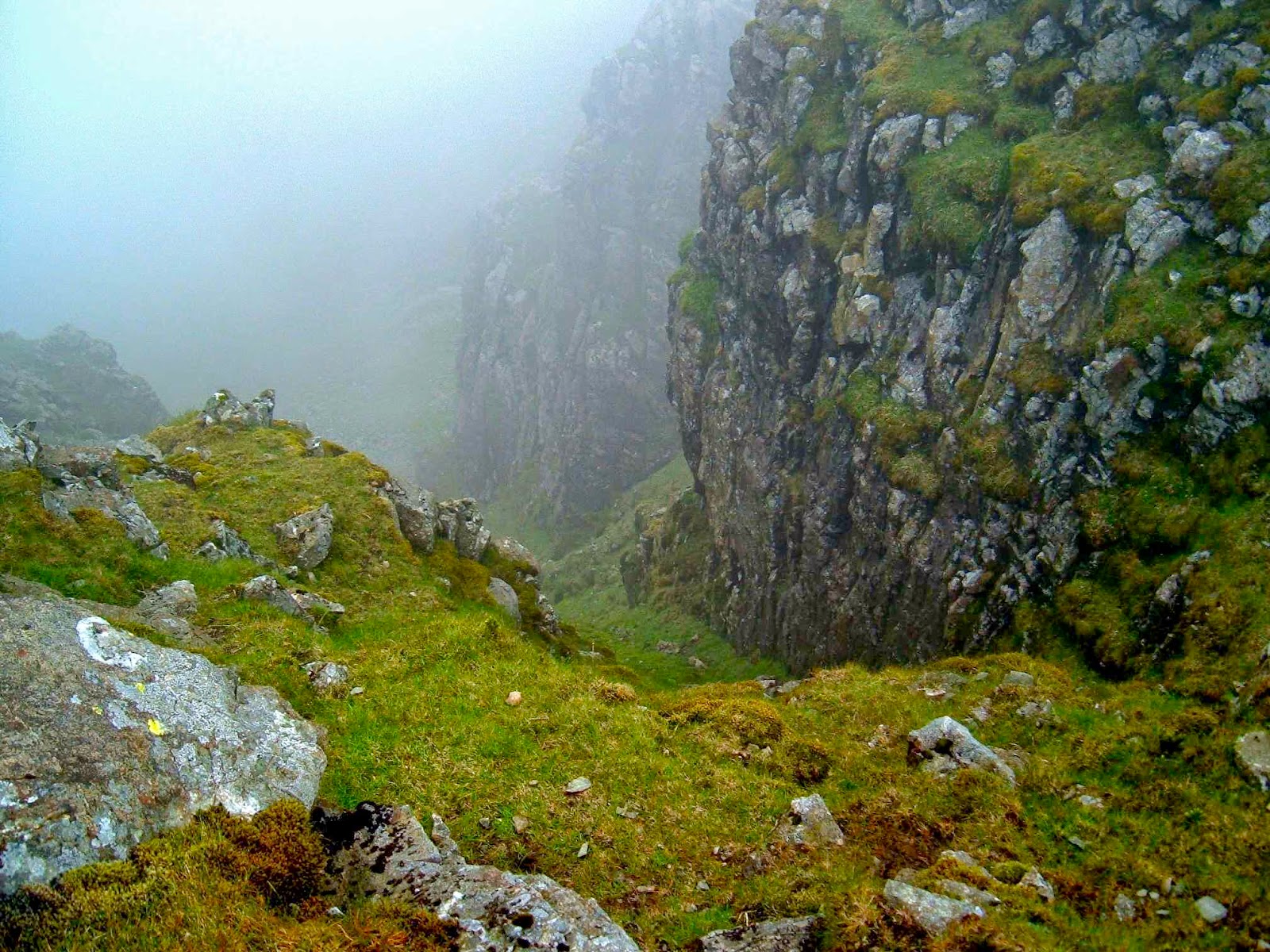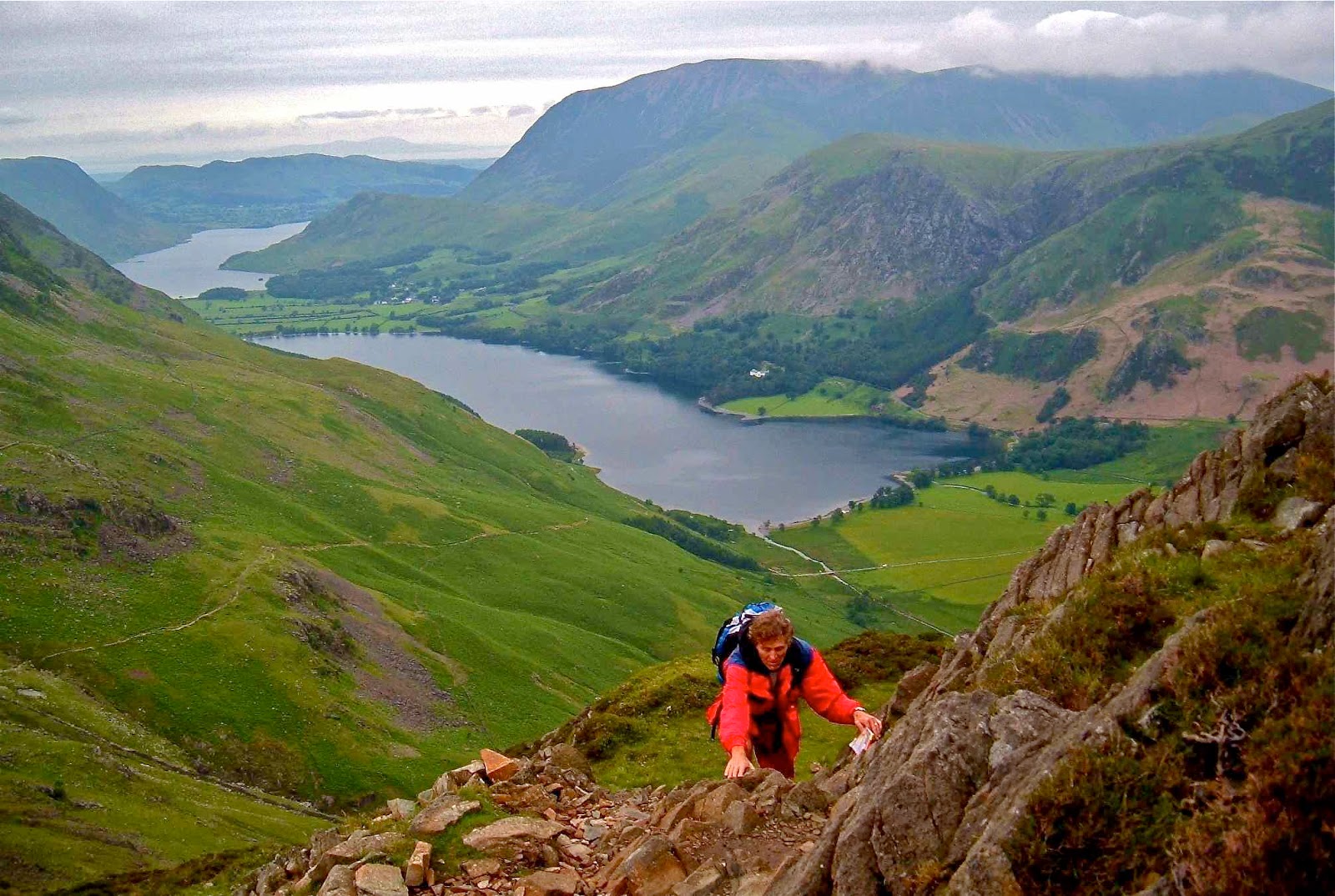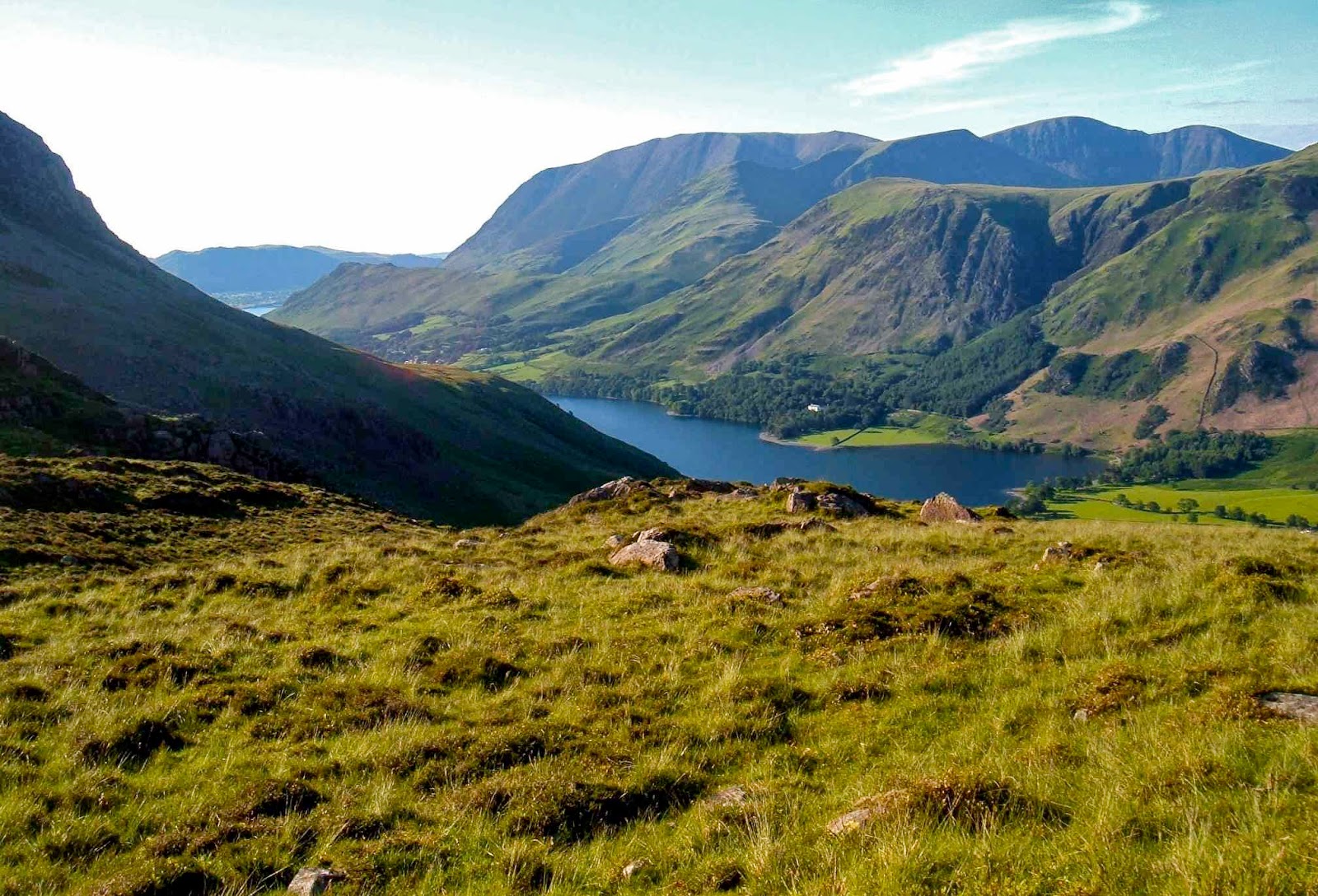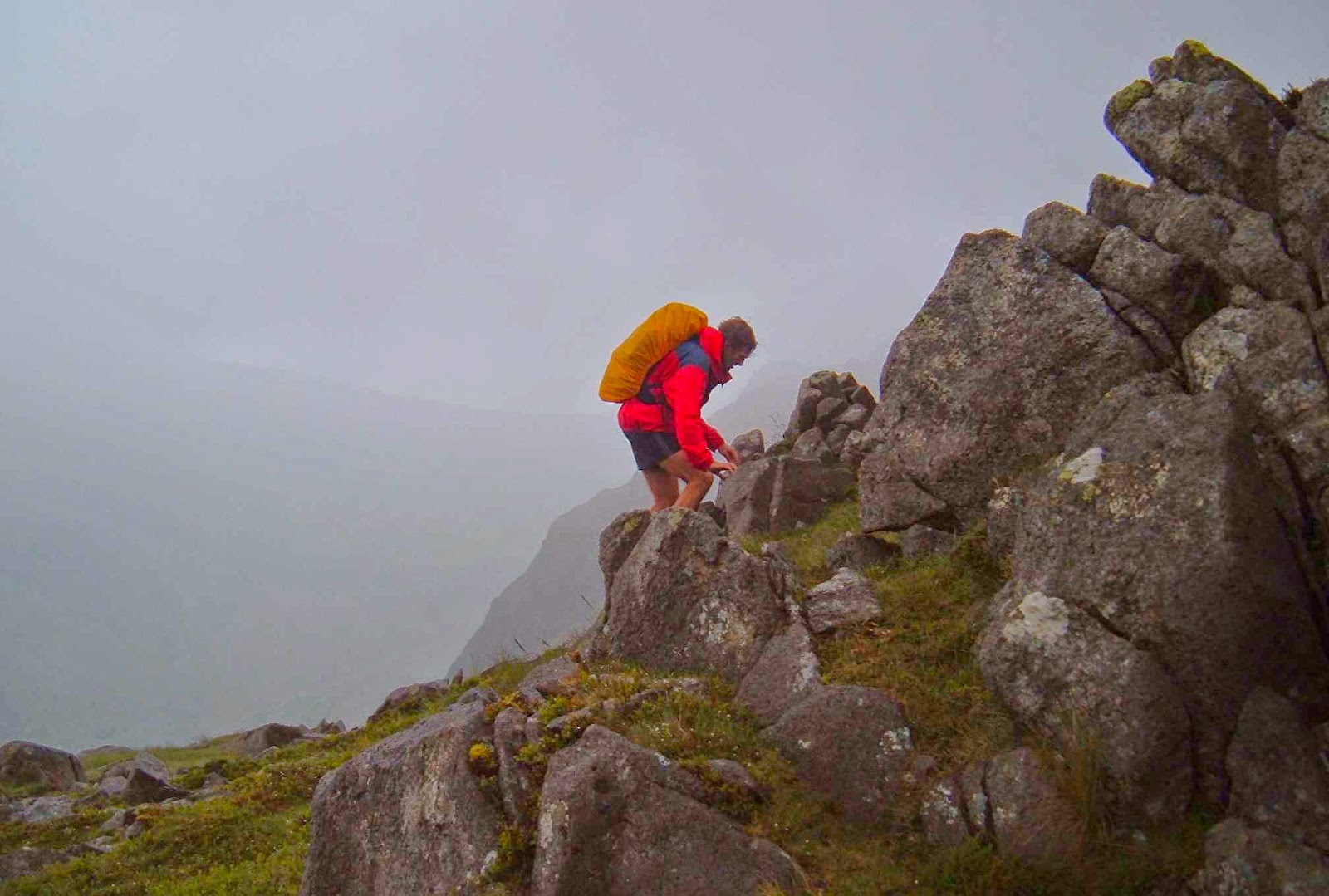The Tour de Monte Rosa
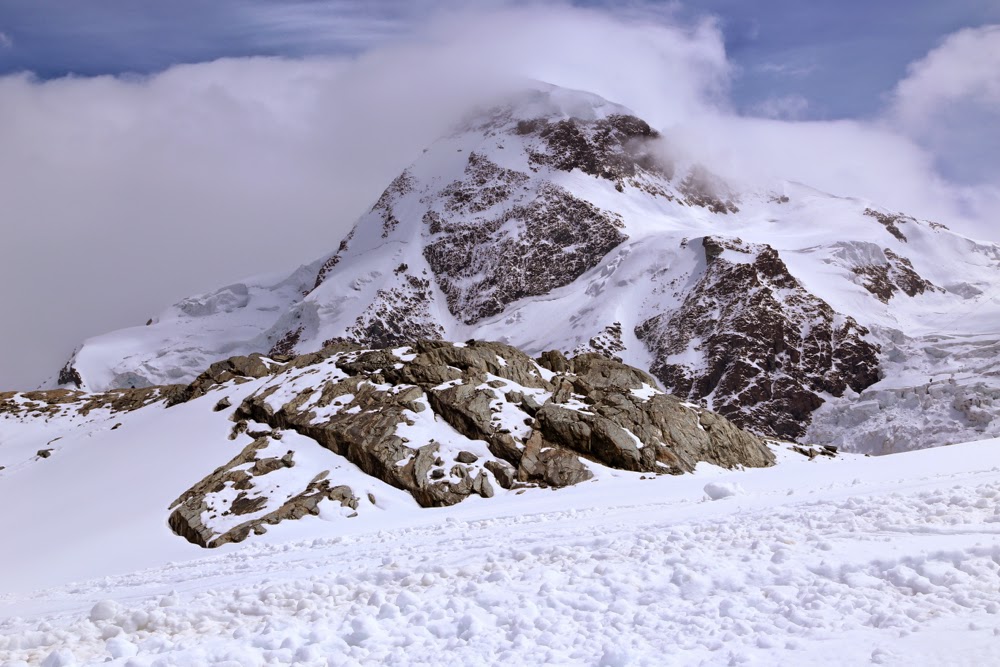 The Breithorn from the glacier
The Breithorn from the glacier
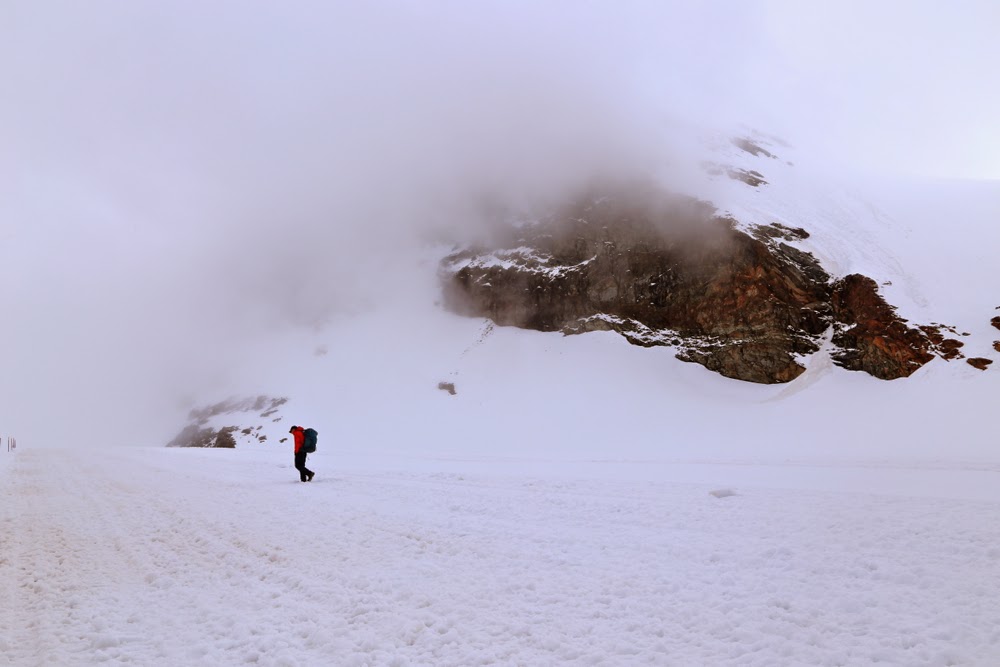 Heading for Theodul Pass – the mist hadn’t descended at this stage
Heading for Theodul Pass – the mist hadn’t descended at this stage
Twice I made plans to do the Tour de Monte Rosa. Twice I tossed them. Many more times I looked at my Cicerone book about the tour and kind of shrugged and dismissed the idea of doing it. Why? First, it made the crossing of the Theodul glacier into such a big deal I didn’t think I could get my husband across it without either a guide or harness and ropes that I didn’t want to lug for the rest of the trip (or both). Second, it made the whole thing sound rather unattractive, so that even if one overcame the glacier, one was not, so it seemed, rewarded with beauty as a result. However, I’d bought the book as the idea of circling Europe’s second highest mountain had appeal, and I’d done TMB four times, and the haute route and more. I wanted something new. The book sat on my shelf as a kind of challenge. I was sick of having it there and decided that this year was its last chance. We would set out and go as far as we would go. If we failed we’d give up forever. If we succeeded, then … what? We’d see what lay the other side of this terrifying glacier.
Arriving at Rifugio Theodulo. Hoorah.
Our route for the next day is to follow those ski lines.
The mist lifts, but the sky still looks menacing
We were not the only scared ones. If you surf the web, you’ll find questions by other intimidated people, and every traveller I met doing the route who didn’t have a guide wanted to know how it was: was it as bad as it sounded, did they really need a guide or a harness and rope, etc? Others opted to start just after the glacier and finish in Zermatt, just before it, so as to avoid it. I decided that we would begin in Zermatt and do it first so that it wasn’t hanging over us the whole trip. If we failed, there were other walks we could do. And with that philosophy, we tentatively set out, happy to be underway with a real pack at last, but apprehensive about what lay ahead, especially as the weather was not looking good, and it worsened as we climbed.
By the time we reached our lunch spot at Gandegghütte, which normally has a brilliant vista of the Breithorn – but today had a good view of our feet – rain was starting to fall. We got in just in time. The rain had until we’d eaten our Penne Arrabiata and drunk our warming hot chocolate to clear. It didn’t, but it switched to snow, which I’d prefer any day.
Wildflowers in the valley next day
Now, one of the things the guidebook insisted on was that if one is so foolhardy as to go on the glacier without a guide, one should at least never go in cloudy conditions when dangerous crevices would be hidden. The people at the information centre down below, however, had told me not to worry, so I didn’t let the fact that we couldn’t see faze me, although I grew less comfortable when visibility was so reduced that I couldn’t see which way was up. The ground was totally invisible to me, and I found it rather eerie – but that was only the very last, steep part. For most of the route where we were on the glacier, we could see enough to follow the tracks made by skiers, and the clouds even parted now and then in the first section.
Descending after Colle di Bettaforca to a different view of the Monte Rosa
Campanulas in the grassy valley down lower
Marmot near Rifugio Gabiet
After we left the security of the hut, I could tell by Bruce’s facial expression he was worried, but I was confident about what I was doing – namely, taking him on the route for as long as I was comfortable about our safety, and turning back and returning to the Gandegghütte the minute I felt threatened by the conditions. We hit a section that was steep enough to have Bruce a bit uncomfortable, but not enough to make him want to back out. I could hear him panting, but we were at 3300 metres asl by this time, so that was hardly surprising. I went on to kick him some more steps in the snow. (He has Parkinson’s disease, in case you’re wondering about this guy that lets me do everything. He can’t help it.)
Still below the snow line, climbing towards Col d’Olen
Ibex above Col D’Olen
Me, having fun running down the ski slope
Suddenly, and completely out of the white, my feet touched flattened ground. If I took two more steps, I would be descending over the other side.
“Bruce,” I screamed with delight, “I must be on the pass. The ground here is flat.” He was thrilled. Grimace changed to thankful smile as he fought the altitude to join me.
“The hut is supposedly two minutes in that direction,” I continued, waving my hand off to the right where the theoretical hut was to be situated. It was not manifest. Off we set in faith, and sure enough, in 1 min 50 a door appeared about two metres in front of me. We had arrived. We felt as if we’d attained the impossible, and were totally elated. I didn’t care if we couldn’t do another step on the TMR. Just to have achieved this seemed like victory enough at this stage. It wasn’t that it had been hard: on the contrary, it had been dead easy. It was just that our expectations of success were so very low that it had felt like mission unreachable. Anything more was a bonus.
En route to Rifugio Pastore, day 4
Dawn on day 5, from Rifugio Pastore
Gradually the hut gained more people, and we got to chat to three Spaniards and two Belgians who had done the route clockwise (as opposed to our anti-), and who were able to tell us a bit about what lay ahead. Again, our guidebook was quite pessimistic, too often (so it seemed to me) complaining about the scenery not being pretty enough. These people, however, told me it was wonderful, and that was without getting views of the Monte Rosa, as it had been raining for them all week. A Belgian wanted to show me his photos to prove it. It was nice to meet with some enthusiasm for the route. Because of my guidebook, however, I only half believed them. Que sera, sera. The future would become ours to see.
“False route”, day 5 – but utterly worth it for the views
The path after the pass (Passo del Turlo), day 5
During dinner, our little cluster debated the whereabouts of the Matterhorn, most of us reckoning that it lay roughly in the direction of the bar, whilst one Spaniard insisted it was out the window. Lo and behold, it decided it had had enough of our uninformed debate and the clouds parted to reveal it leering in at us. Resounding victory to the Spaniard. I couldn’t believe how huge and close it was. Dessert was ignored. Out our group dashed to photograph this wonder. Bruce and I climbed higher and stayed out until our fingers were numb and the light had all but faded. At 3340 metres a.s.l. it gets pretty cold. The Spanish-Tassie-Belgian cadre then sat and gazed at beauty for another half hour in the warmth of the hut, our seats pushed against the glass. “This is the best TV show in the world,” I said in awe, and they agreed. Ironically, we later found the Danish group of 11 sitting around, gazing at the real, techno variety, watching soccer. I guess they differed.
Final sunrise, from Rifugio Oberto Gaspari
Next morning was clear as we headed out, hungry after a “breakfast” that had been as bad and as meagre (not even any bread) as dinner had been delicious and plentiful the previous evening, following ski tracks down in a big arc with a snowy Monte Rosa off to our left, the Matterhorn to our right as we descended several hundred metres before rising again (with a huge descent and then rise to follow that), ultimately dropping from 3320 to 1860. As on every day, we alternated snowy vistas with green fields abundant in swathes of colourful and delicate wildflowers as we ascended over passes and descended to the valleys in between. In almost every hut, dinner was a celebration of delicious food, offered in multiple courses with seconds always available, and breakfast was often a pretty dismal affair. If you scored a bit of cereal it was pretty amazing. Juice even more so. For lunch, we mostly waited until we’d arrived at our destination, which we did by lunchtime on most days, and ordered delicious soup and sometimes a tart. That gave us the afternoon to explore the area surrounding the hut (and do a hand wash if climbing had extracted a nasty smell-toll on our clothes).
Early morning, Rifugio Oberto Gaspari
On one day (day 5) shortly after beginning, two people moving at a good pace came to an intersection in the path at almost the same time I did. We met and chatted and, as our paces were similar, kept together, talking and laughing as we went. I was aware that the distance between me and Bruce was widening, but I also knew the Danish group was moving near him, and that he was about the median speed of that group, so continued talking and laughing and climbing with my new friends. It was fun to have some company. There was a Norwegian up ahead who knew what she was doing, so we had no reason to check our location. After about 40 minutes or so, the Norwegian stopped for a sit-down, but we didn’t want to, so on we went. My new friends did stop for a bit, but I was still full of the joy of climbing, so decided to go on without them for a while, having seen from above that they were now following on.
Back into the mist; last morning.
The long and short of this story is that ultimately I had climbed an extra 500 metres to a different and wonderful high point that gave stupendous views over three of the Monte Rosa glaciers. I realised I had erred but hoped the Americans I had been chatting to would soon join me, so ate a peach and drank a bit (water plus scenery) whilst waiting for them. When they didn’t appear, I went back down and after about 100 ms descent, found them. We were relieved and delighted to see each other. I went back up to the top with them, and then we began the long descent back to a fork in the track that had been so covered by a stream that it had not been visible. The Danes, with the benefit of a guide who had done the walk a week before and who knew it well, didn’t have the same problem. The wrong track had actually been far more obvious than the right one, and there was no sign to indicate a fork. Now we were chasing Bruce. Rick was mildly upset, as his guide sheets said this was the longest day, and we’d just made it two hours longer. Anyway, we worked together, they providing me with nuts, raisins and tuna, and me kicking steps for them and encouraging them through snow that tested their comfort zone. We made a good team, and caught Bruce and the Danes just as they were stopping for afternoon tea.
Our penultimate day was our last day in Italy. We had adored the whole thing and I was sad to be nearing the border with Switzerland and the end of our trek. The map for this day showed contours so close together they almost presented a pure brown front. Bruce was feeling tired from the previous day just described, which had, indeed, been very long even without an extensive detour, so he decided to miss the contours and take a téléphérique that happened to go to a spot near our hut. I was happy. Now I had a solo hike done at my own pace up a nice steep slope, time to dream and enjoy the scenery, to take in the smell of the forest and the sight of that day’s face of the Monte Rosa, to enjoy the clear streams and to see how many marmots and ibex I could spot and nothing else to worry about.
The mist clears to give us a glorious view of the golden madonna in Passo Motto Moro
I cut the advertised time in half, so when I saw a building ahead, I assumed it was actually the middle station for the cable, and was so convinced I had another two hours to go that I had to read the name of the hut three times to confirm for myself that I had, indeed arrived. Rifugio Oberto Gaspari. Last hut. It was bitter sweet arriving. That afternoon we explored the area of the pass, and I took Bruce over the start of the descent that worried him from above. The practise made him feel much better. Parkinson’s is a huge hindrance to confidence when it comes to descents on slippery snow on paths that don’t actually exist. (His “path” is often merely the steps I kick for him. A person without Parkinson’s mightn’t even think about the danger of falling, but falling is always a possibility if you have this disease, so thinking of the consequences is not amusing).
On the final morning, after an exceptionally good hut breakfast, we set out nice and early – we had to reach Zurich via Zermatt this day. However, the ice was absolutely solid and as frictionless as a metal slippery dip. In addition, despite a glorious sunrise providing memorable photos, the clouds that had sat below the mountains for my paparazzi efforts had now risen to meet us, and once more we were in a whiteout. I couldn’t find the via ferrata that had been so handy the previous day, and we lost time while I fumbled around trying to get us on the exact route we needed. It was all so simple when you could see. Anyway, at last we found the ferrata and used the steel ropes to prevent falling backwards as we climbed. Passo Motto Moro, that we were heading for, has a beautiful and huge golden Madonna holding her hands out in a peaceful and welcoming gesture towards Italy, her back, perhaps symbolically, turned on Switzerland, a land that strikes one as being more interested in economic than spiritual matters.
I will be back, as I adored it, but I fear it will have to be solo next time. I’m so glad I gave the route one last chance before giving up on it, and that Bruce got to experience its unique beauty before his Parkinson’s made something that challenging an impossibility.

